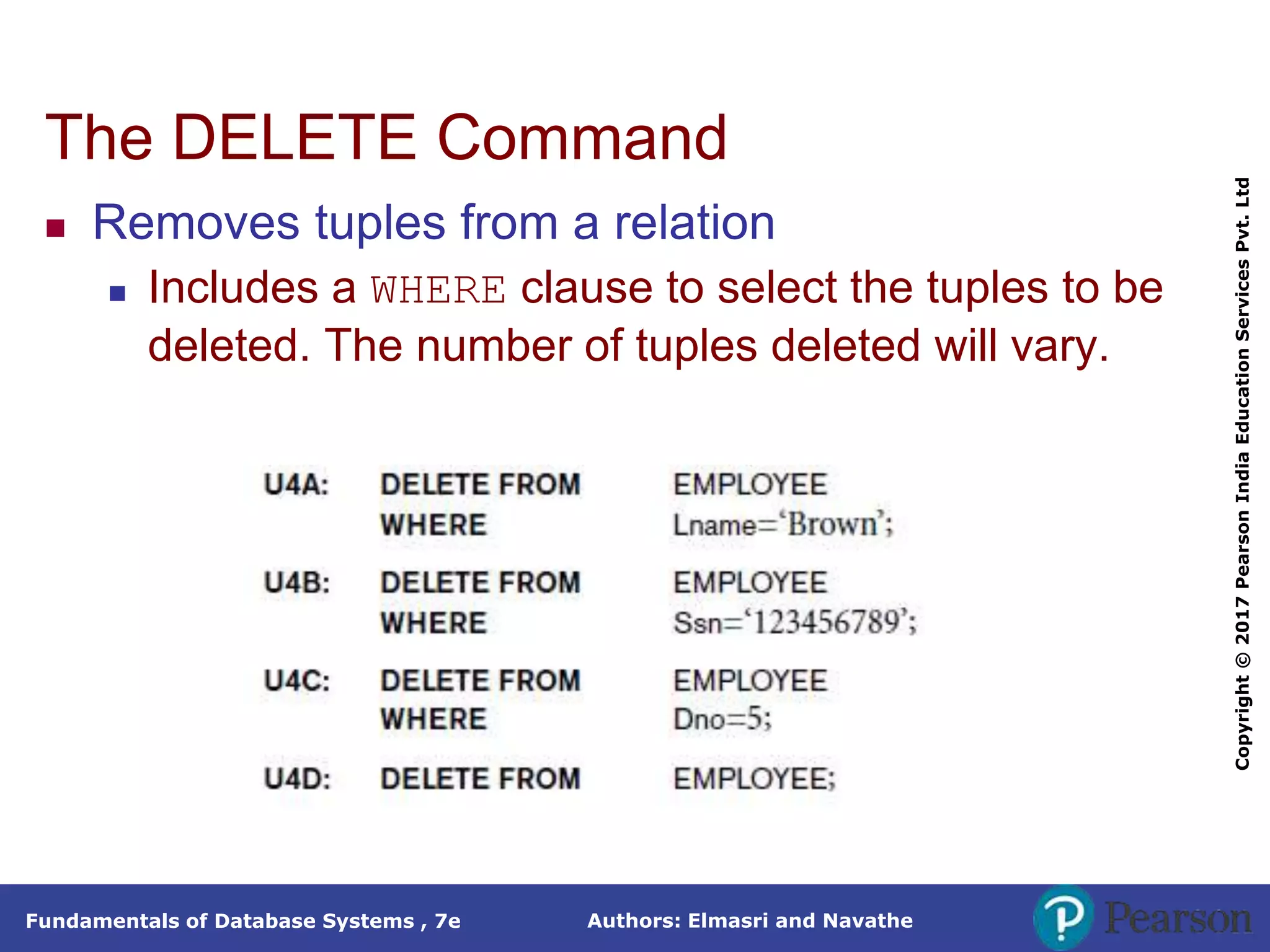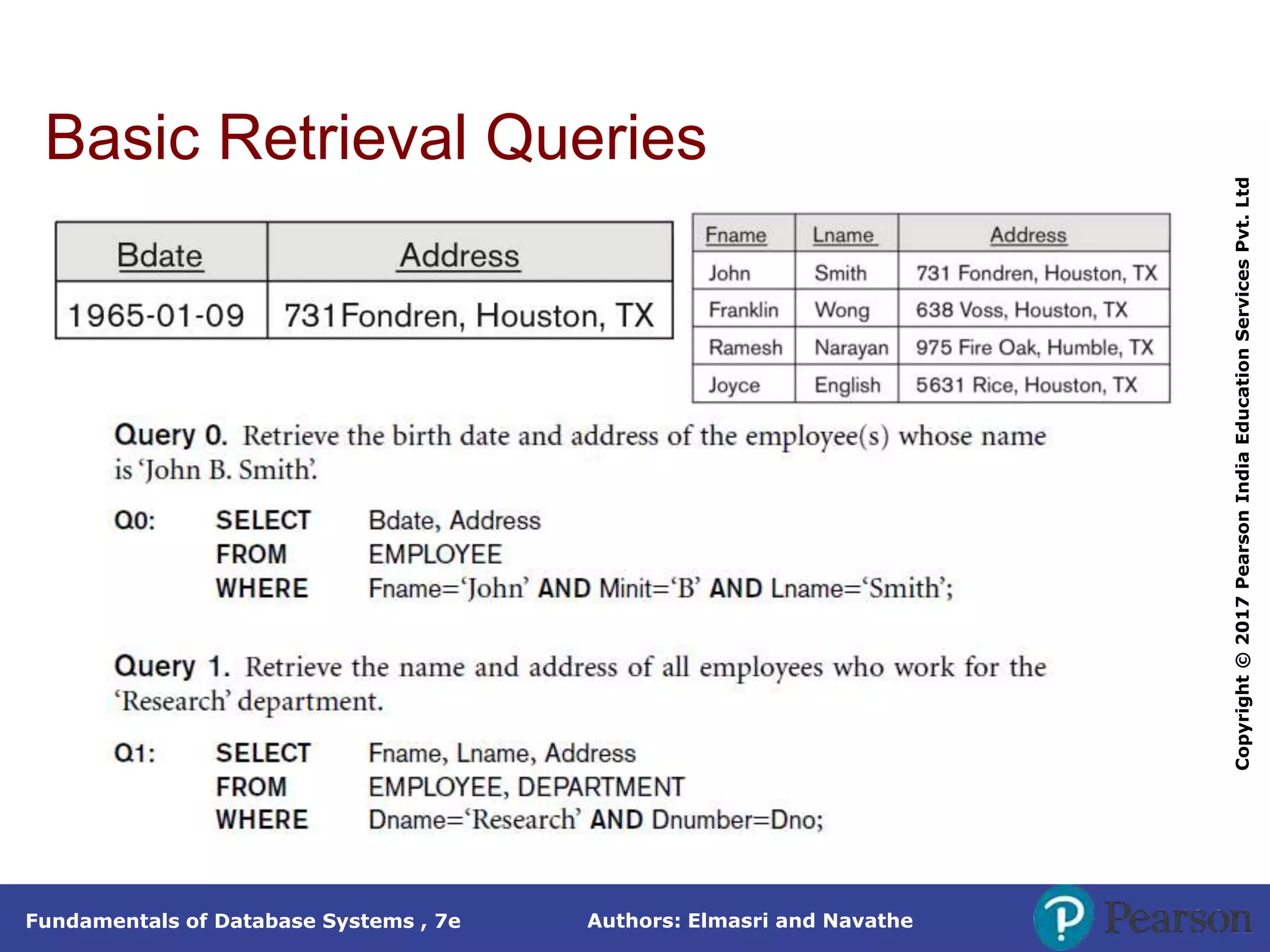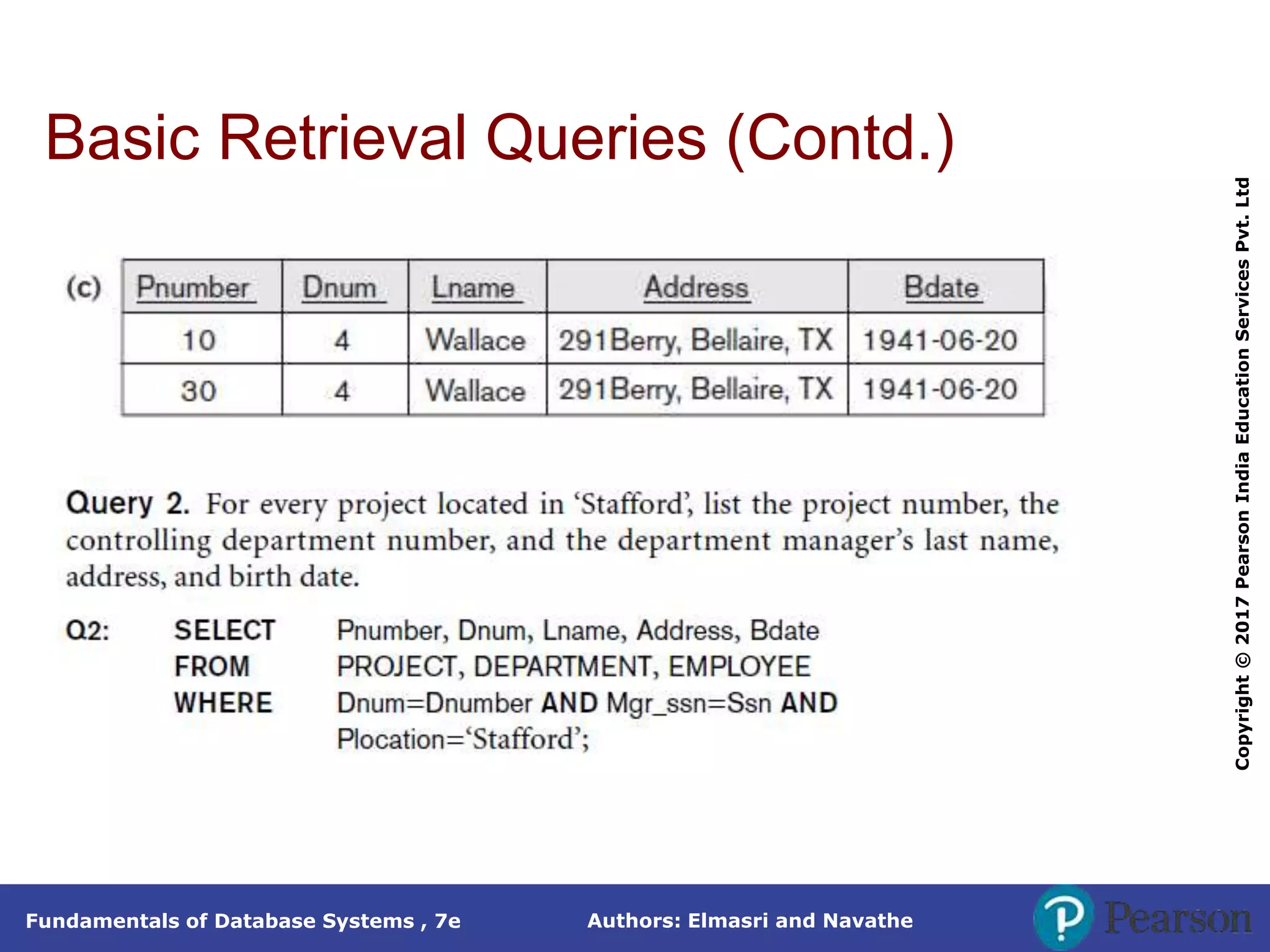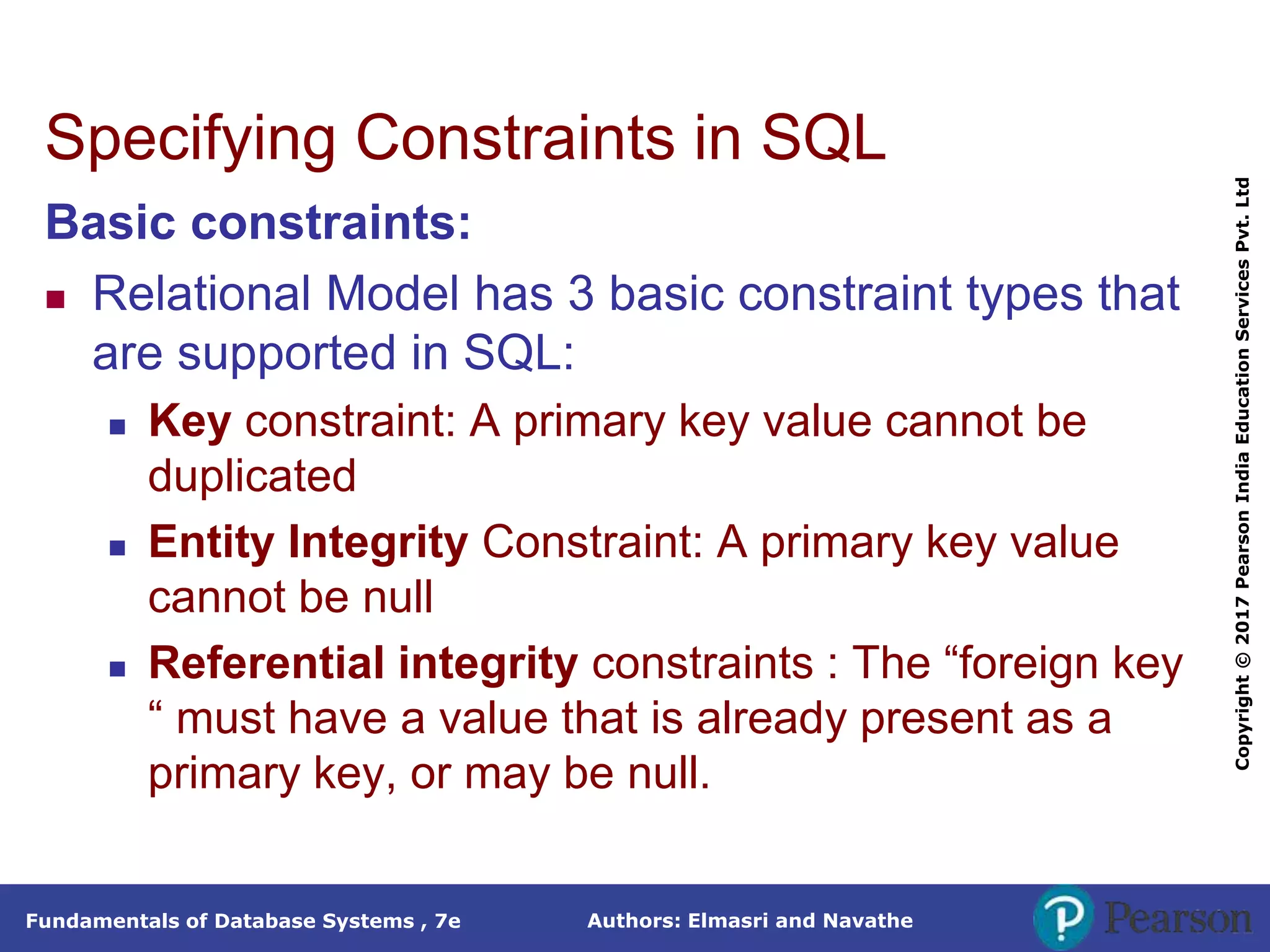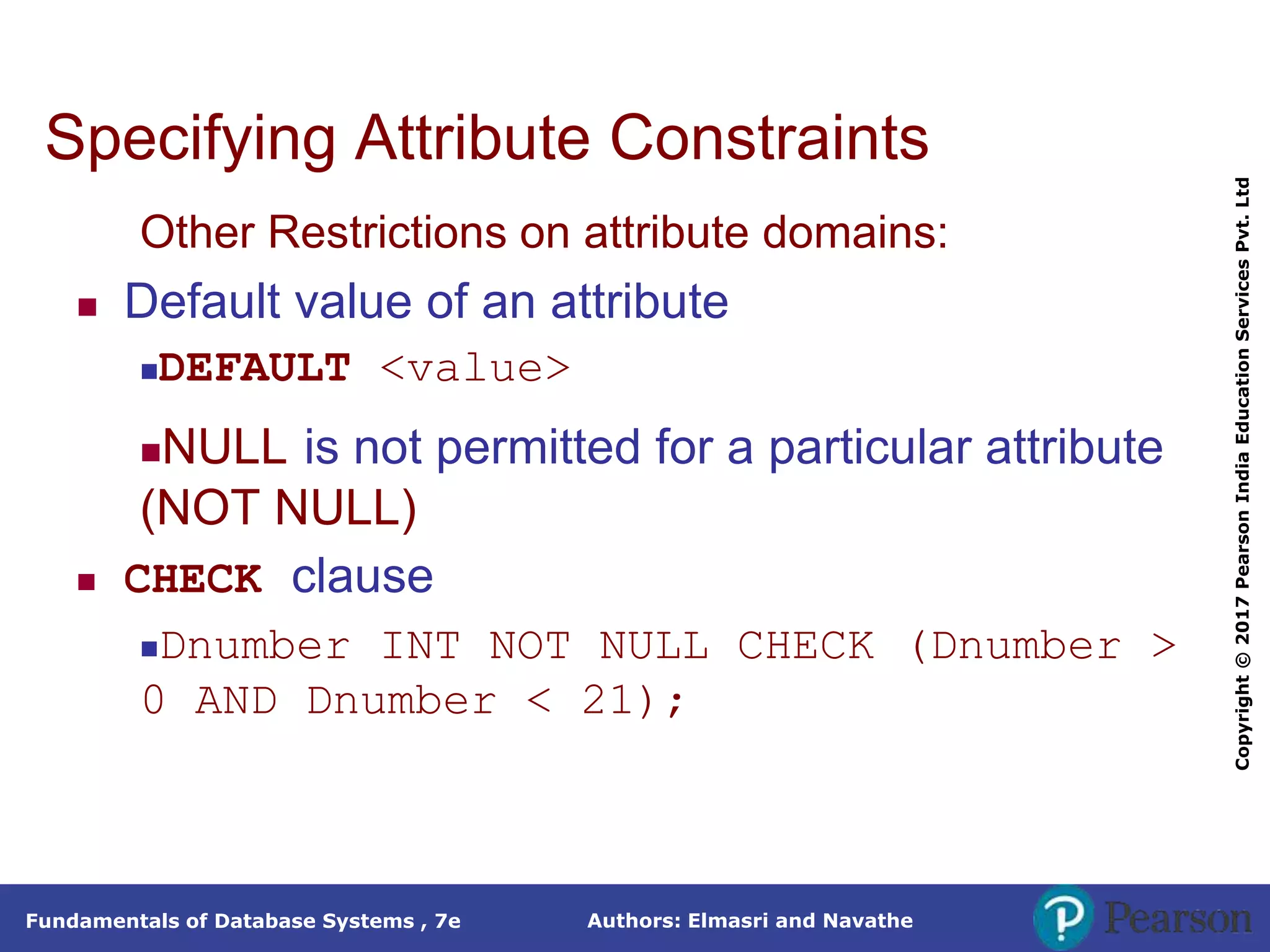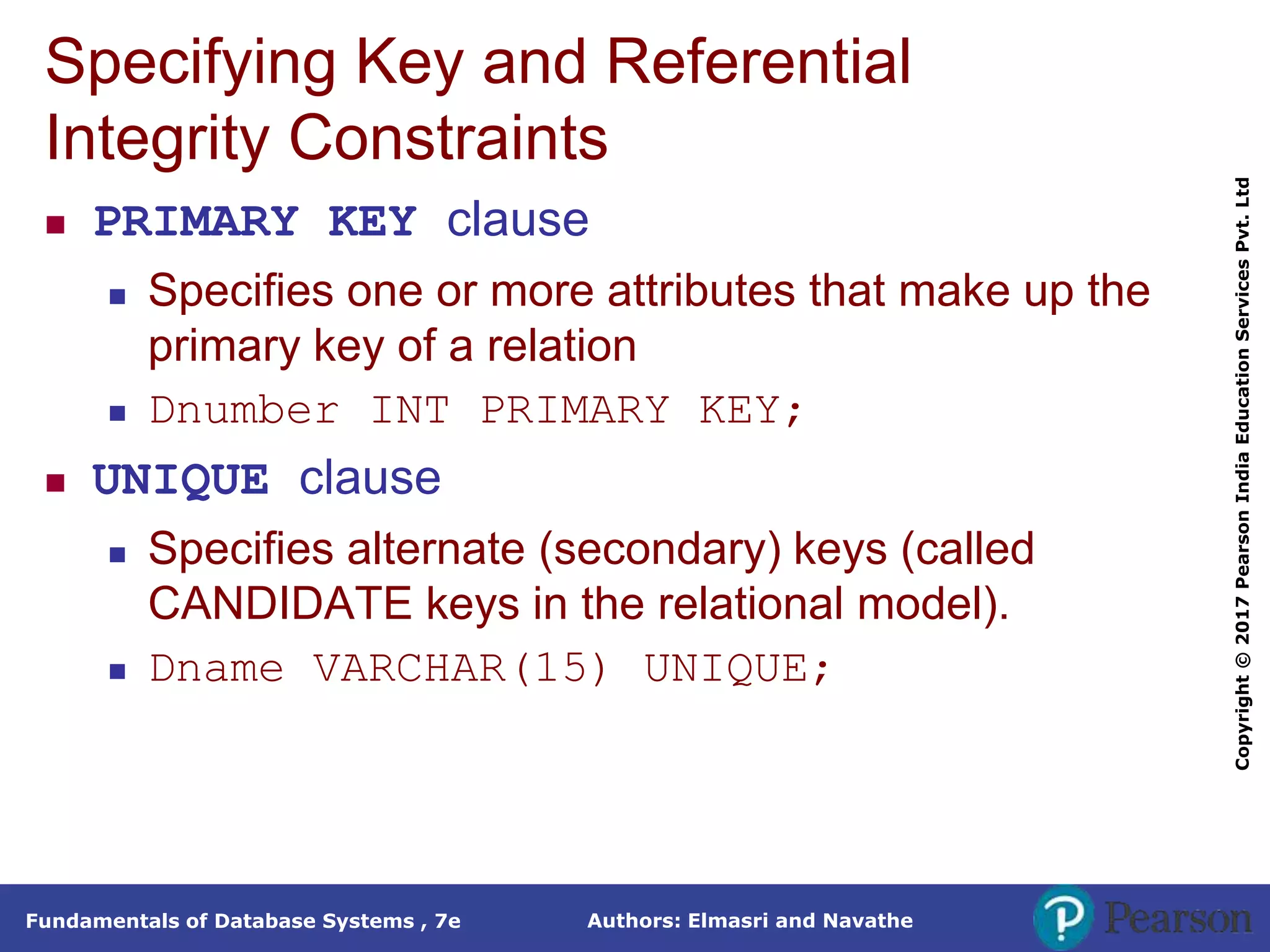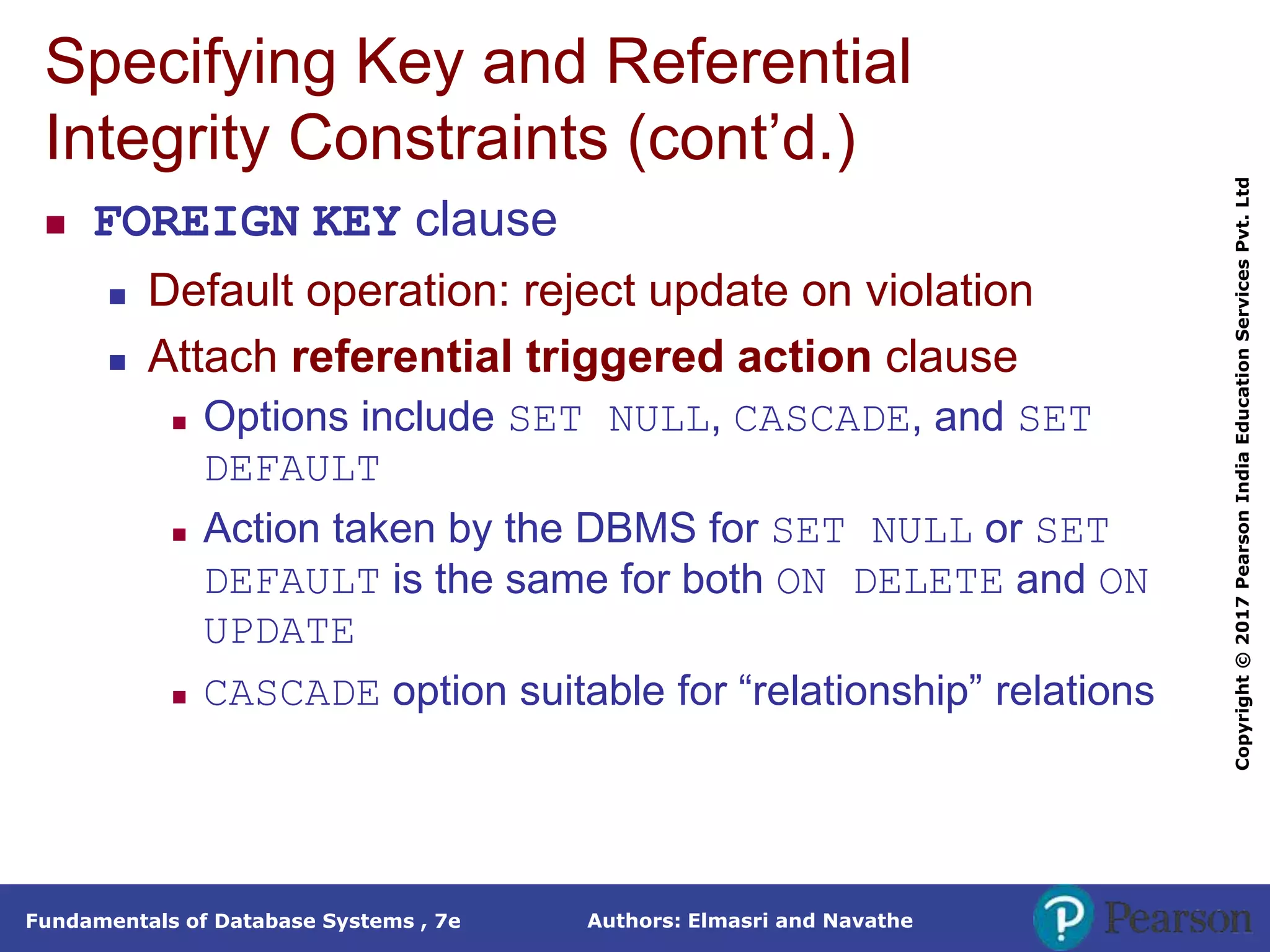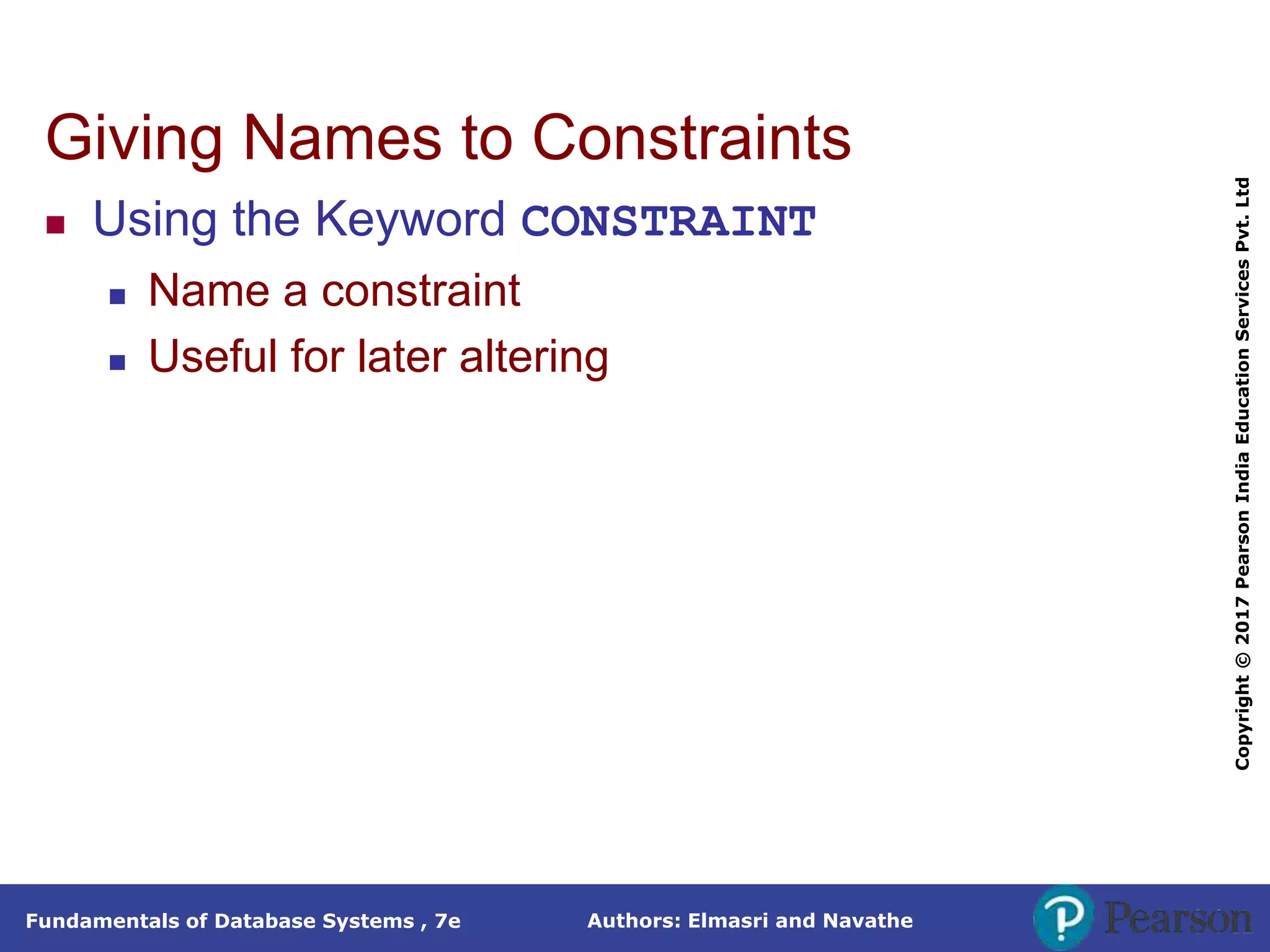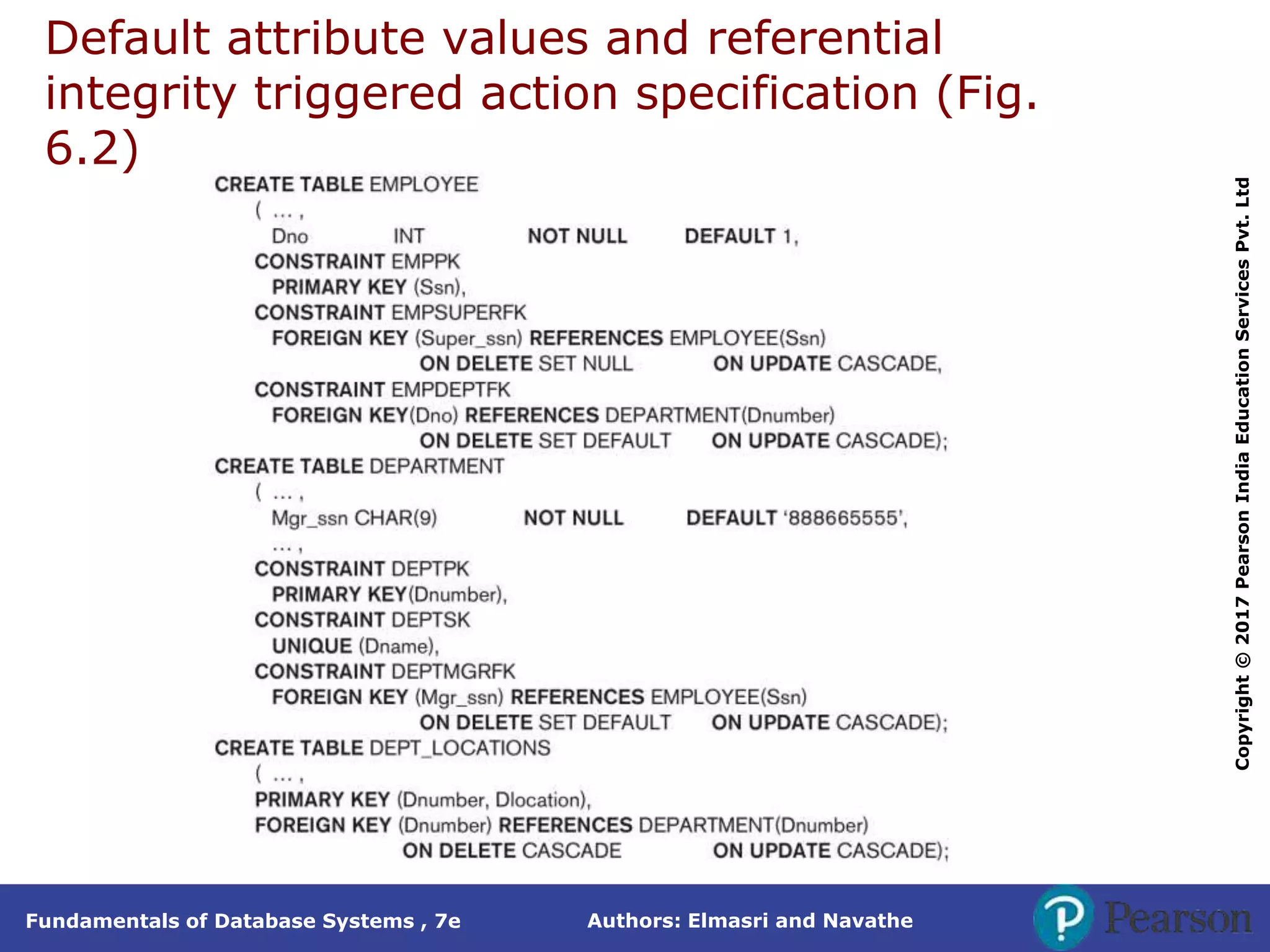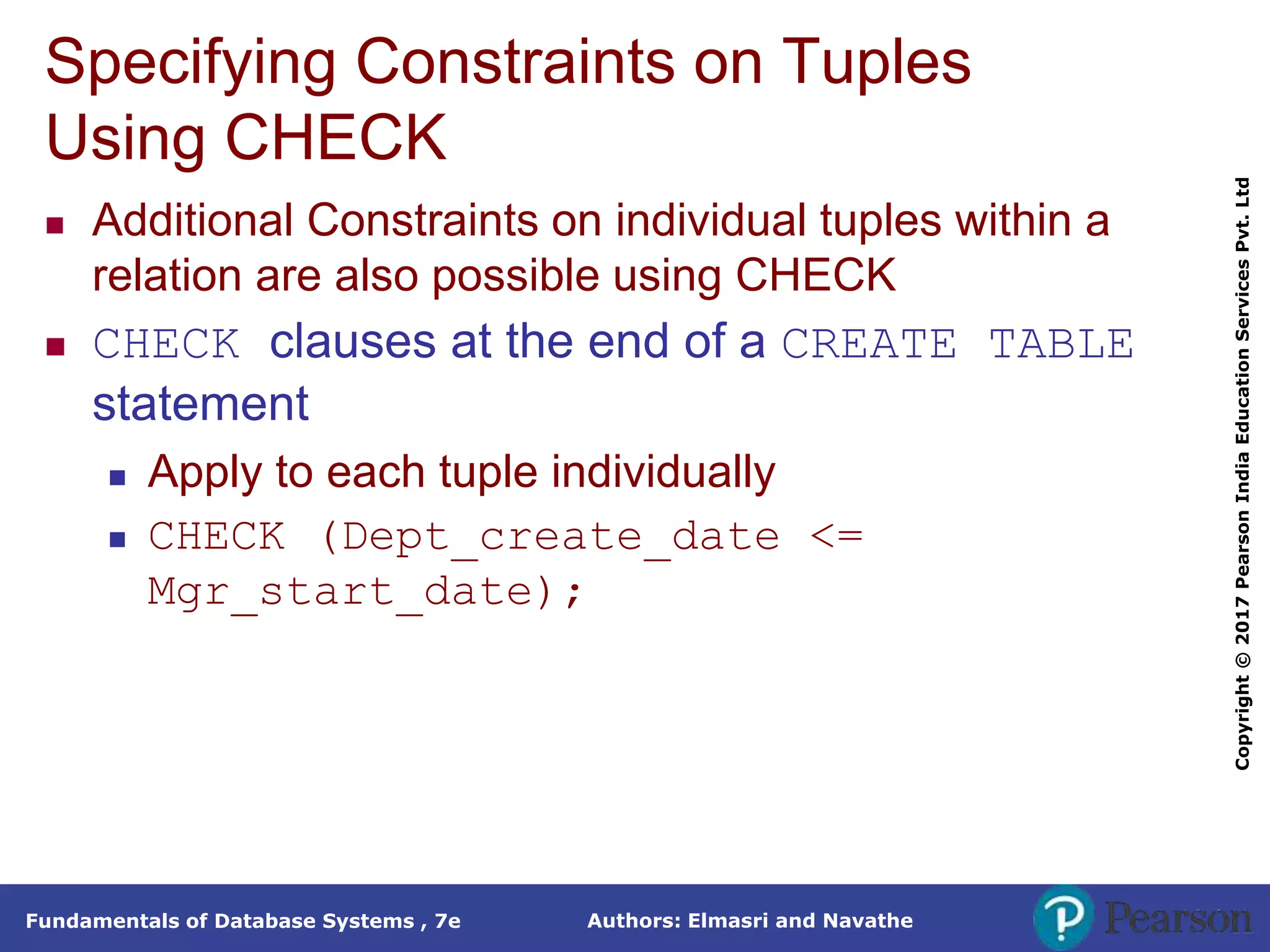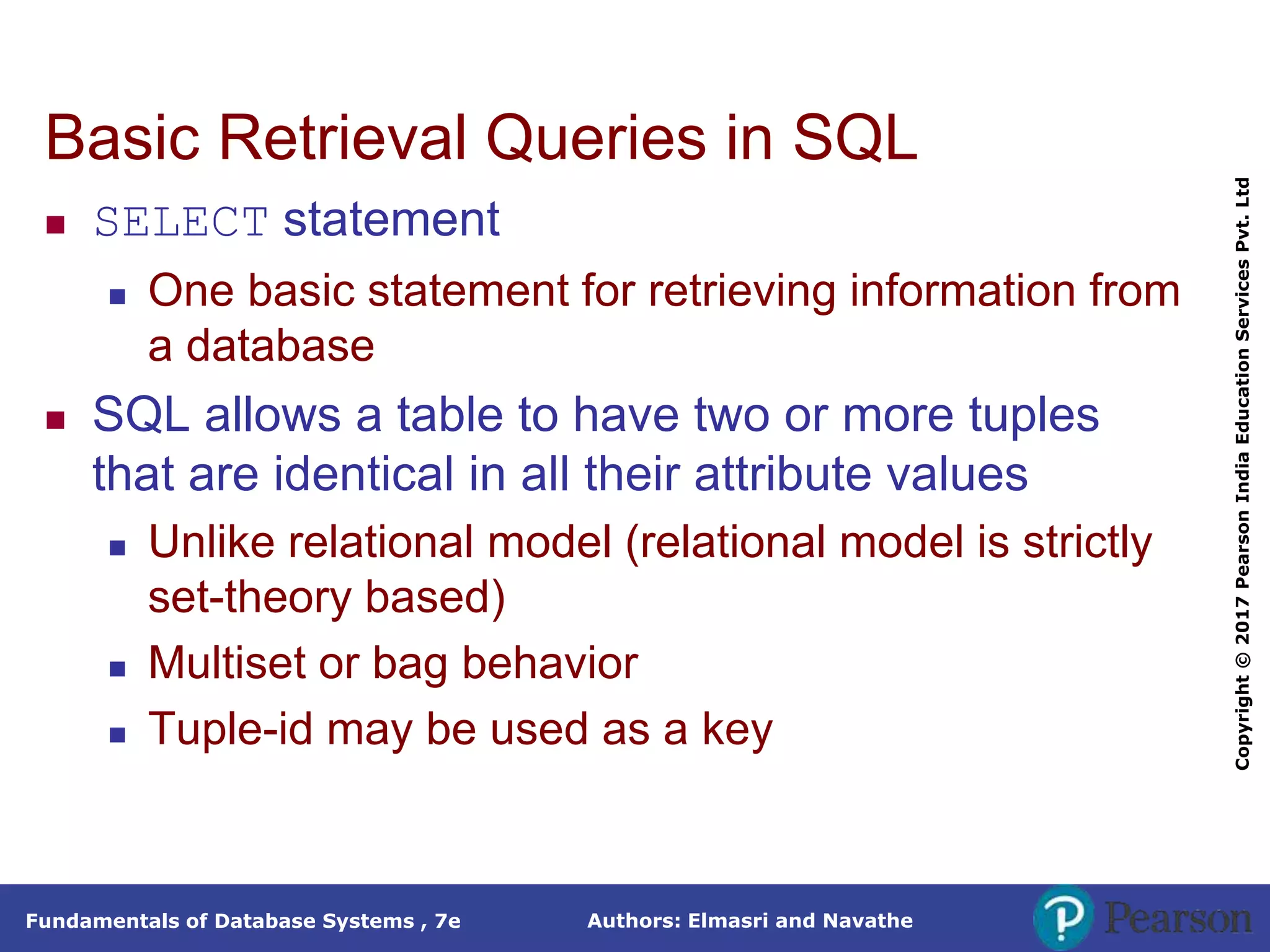This document discusses the basics of the SQL language. It covers SQL data definition and data types, specifying constraints, basic retrieval queries using SELECT statements, and data manipulation statements like INSERT, DELETE, and UPDATE. The key topics include the CREATE TABLE statement for defining tables, basic and additional data types, the INSERT statement for adding rows, the SELECT-FROM-WHERE structure of queries, operators like AND and OR, sorting with ORDER BY, and using UPDATE statements.
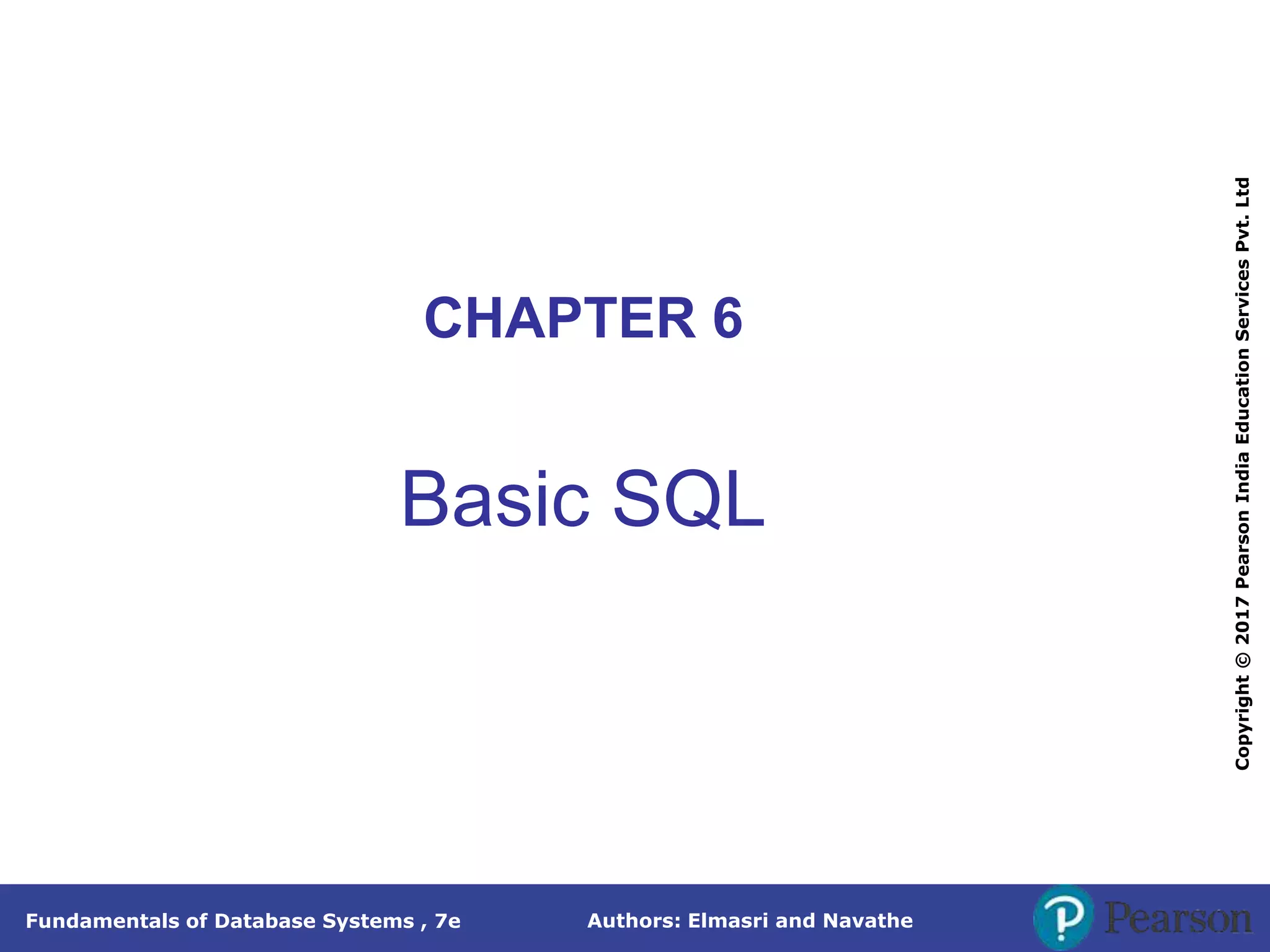
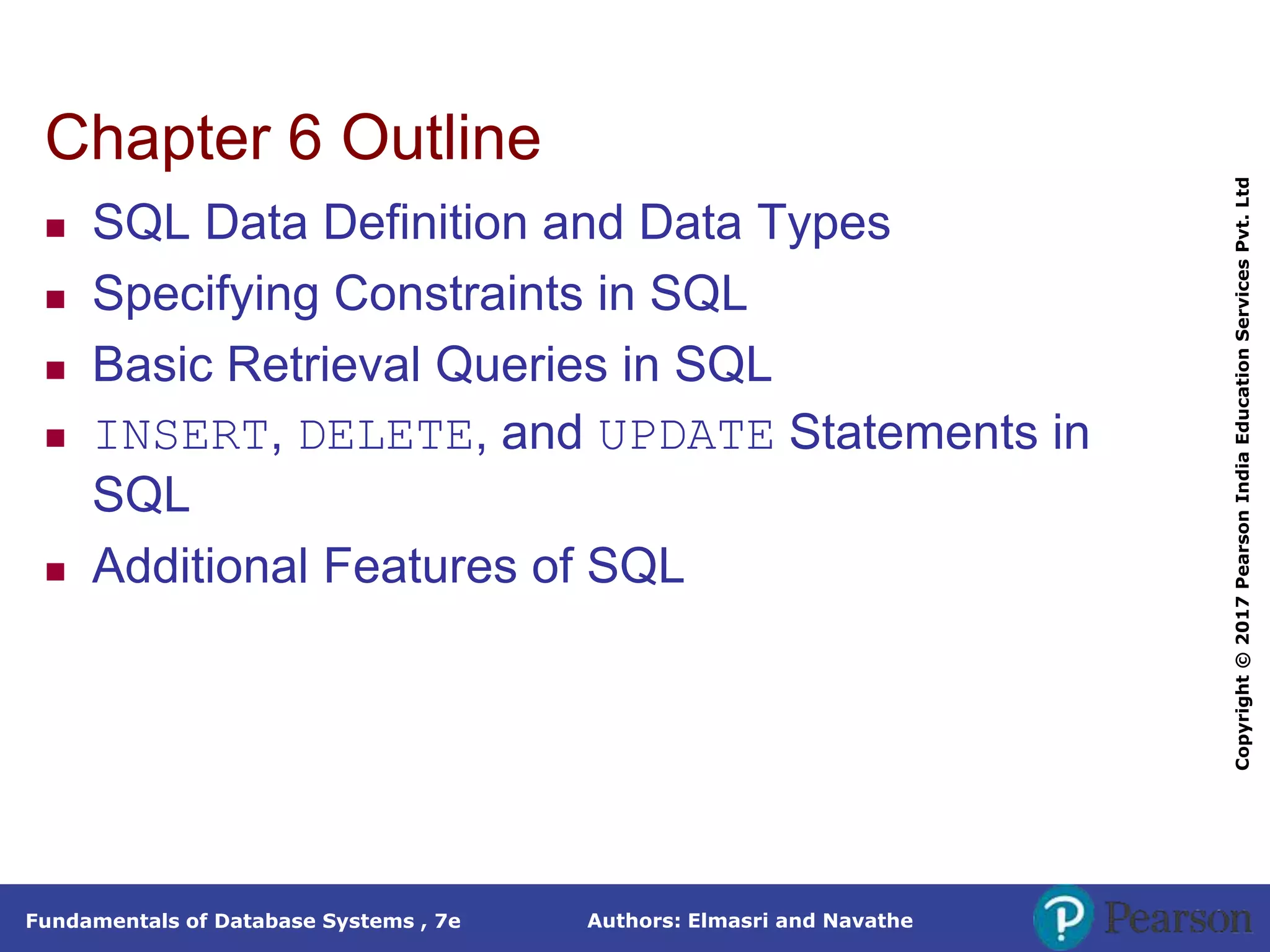
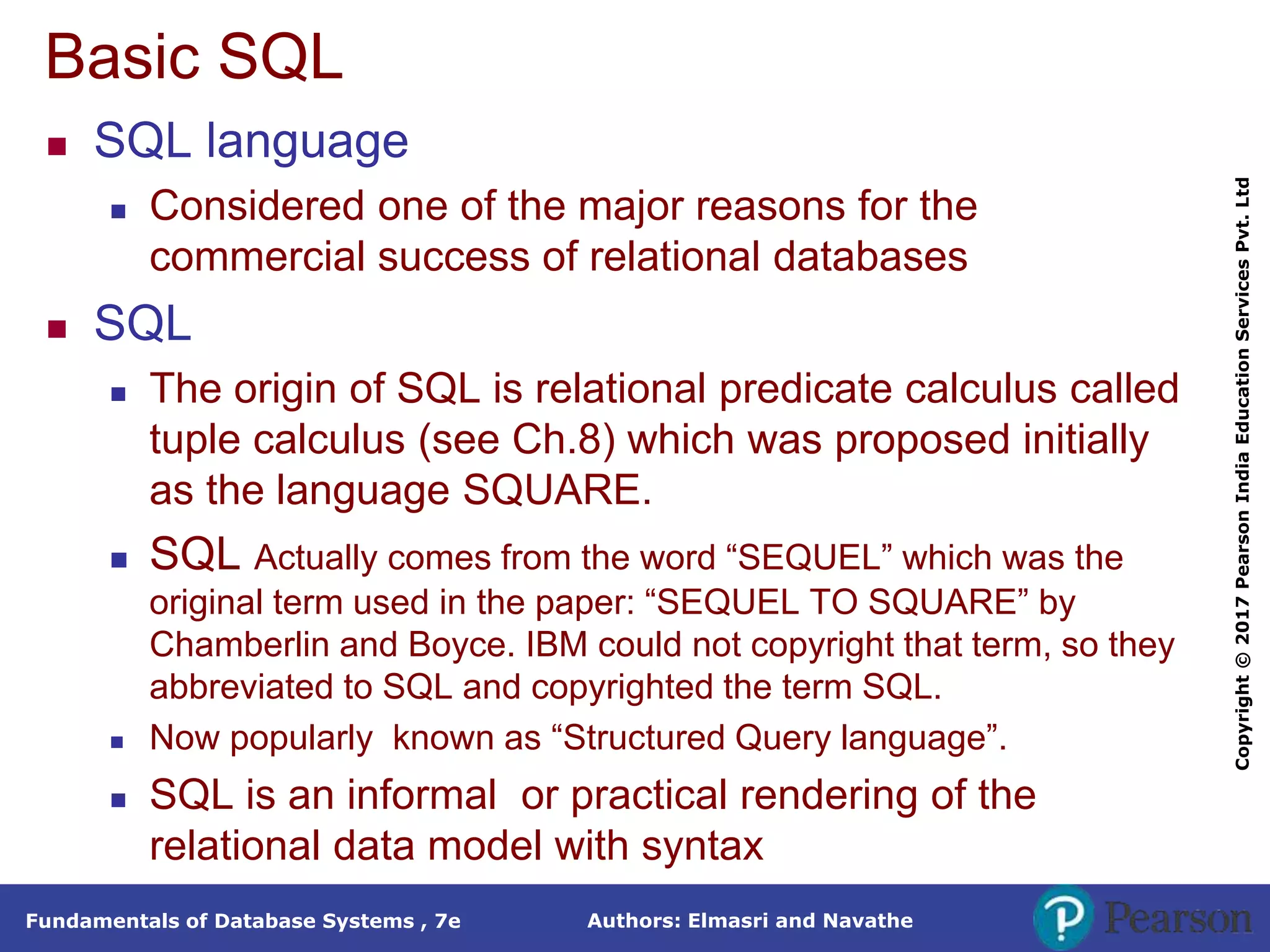
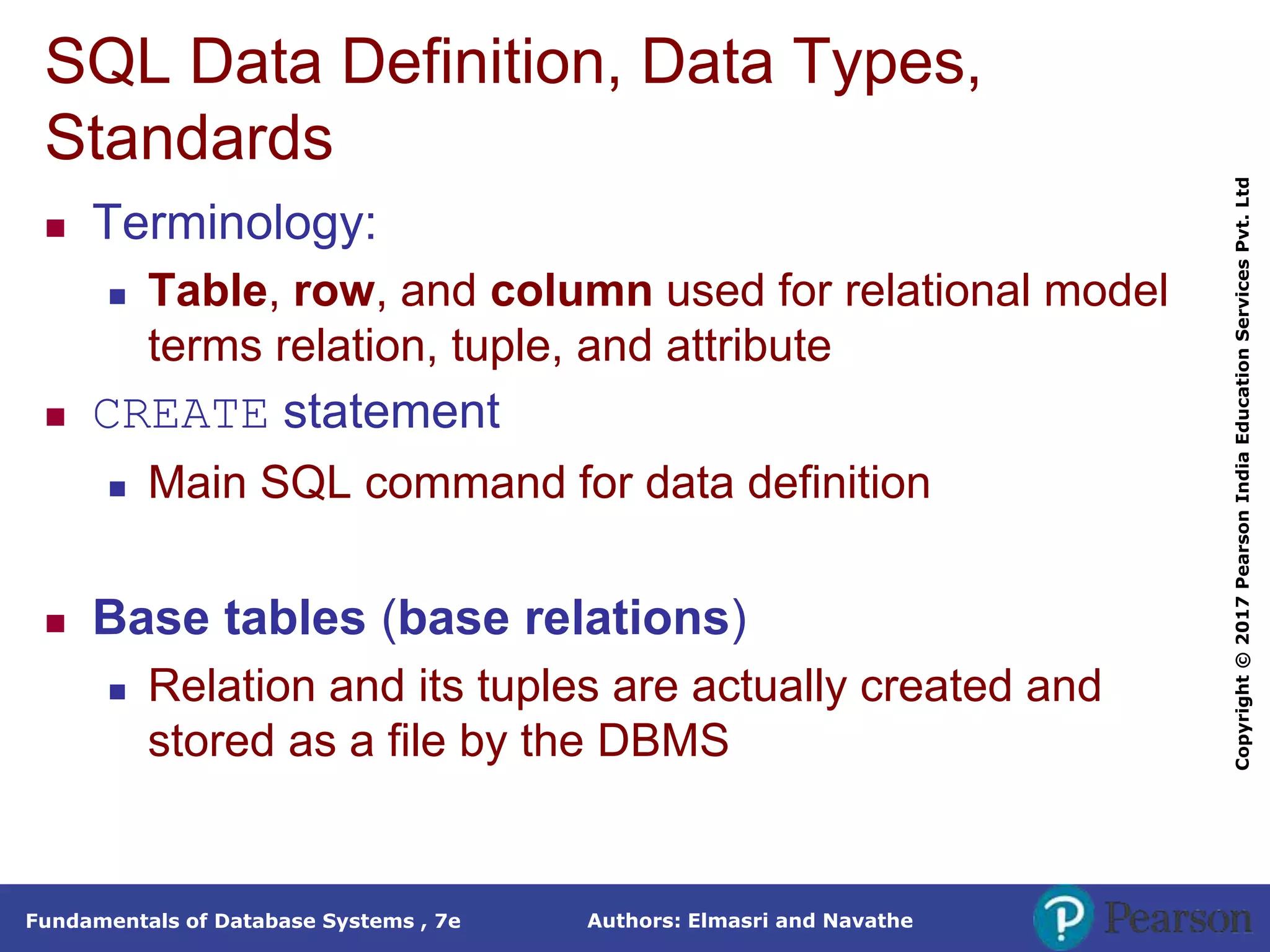
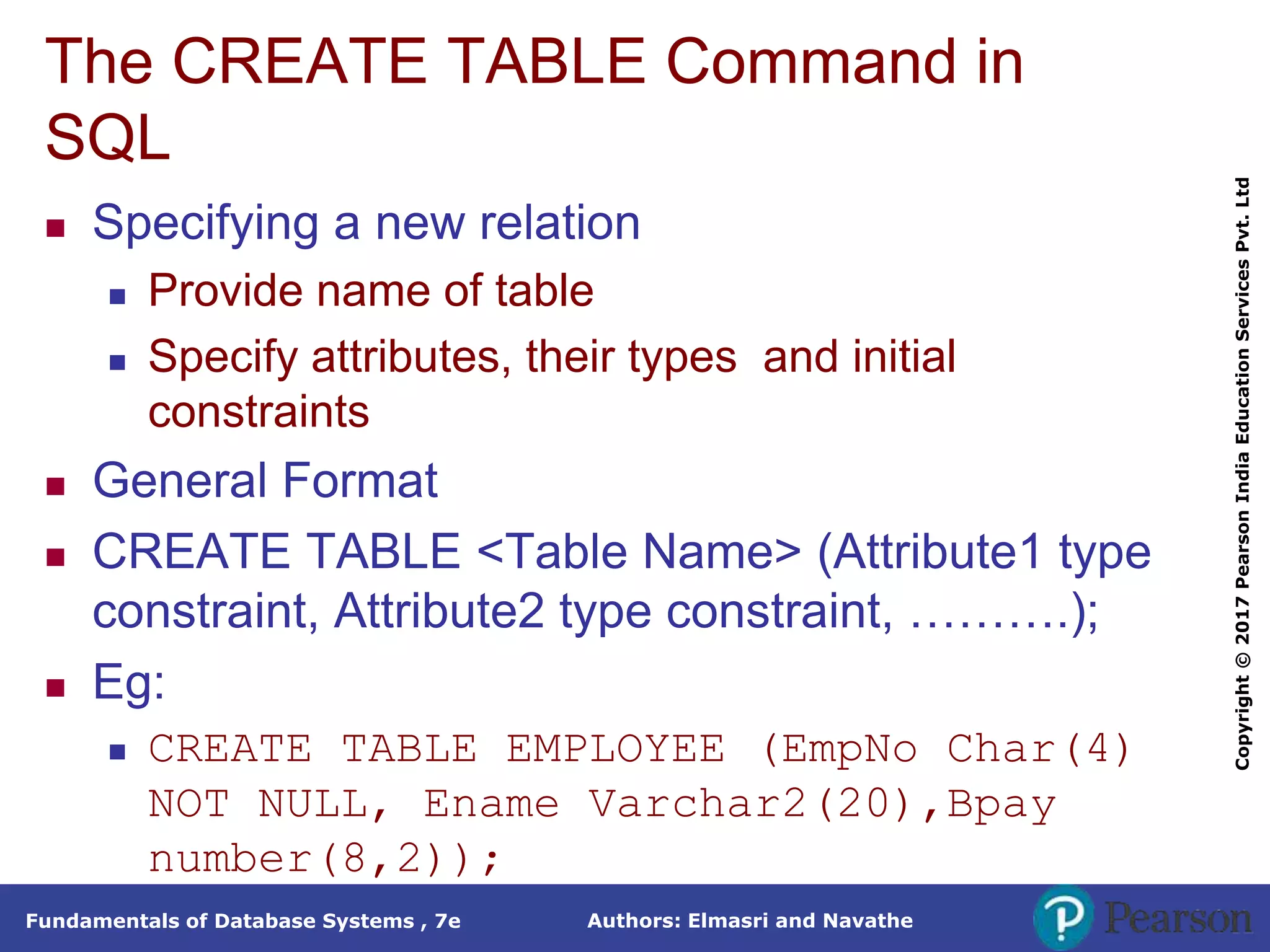
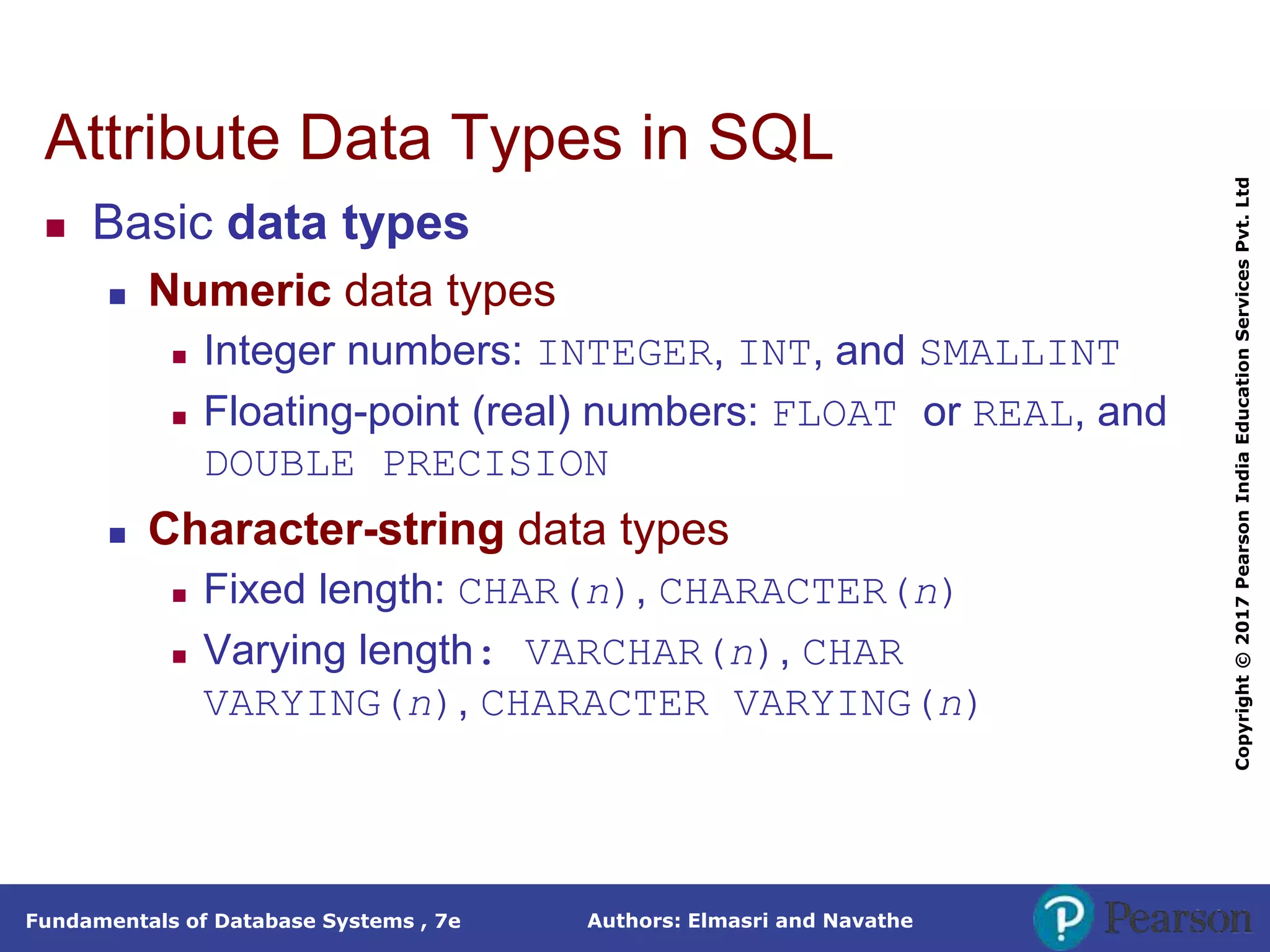
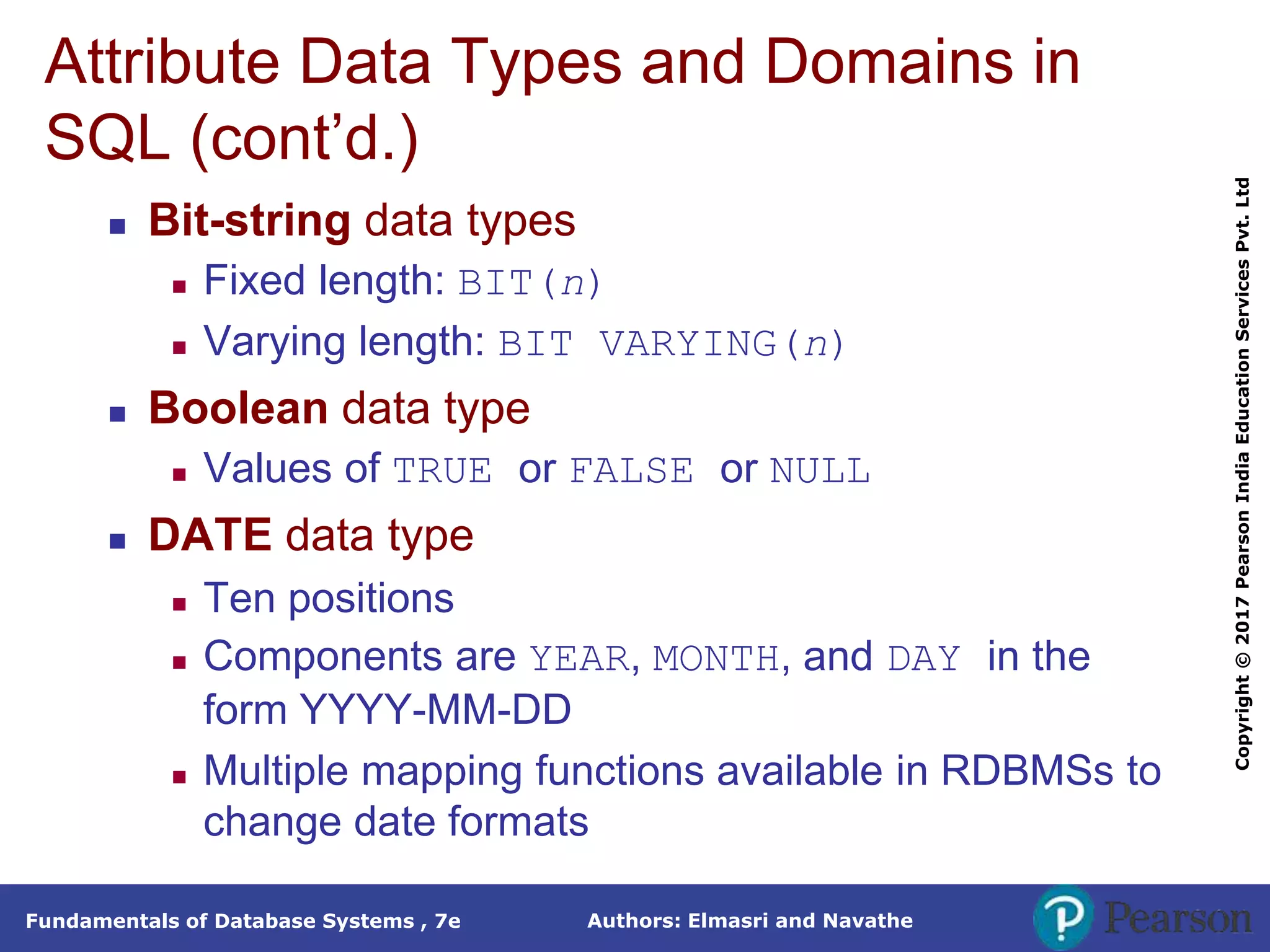
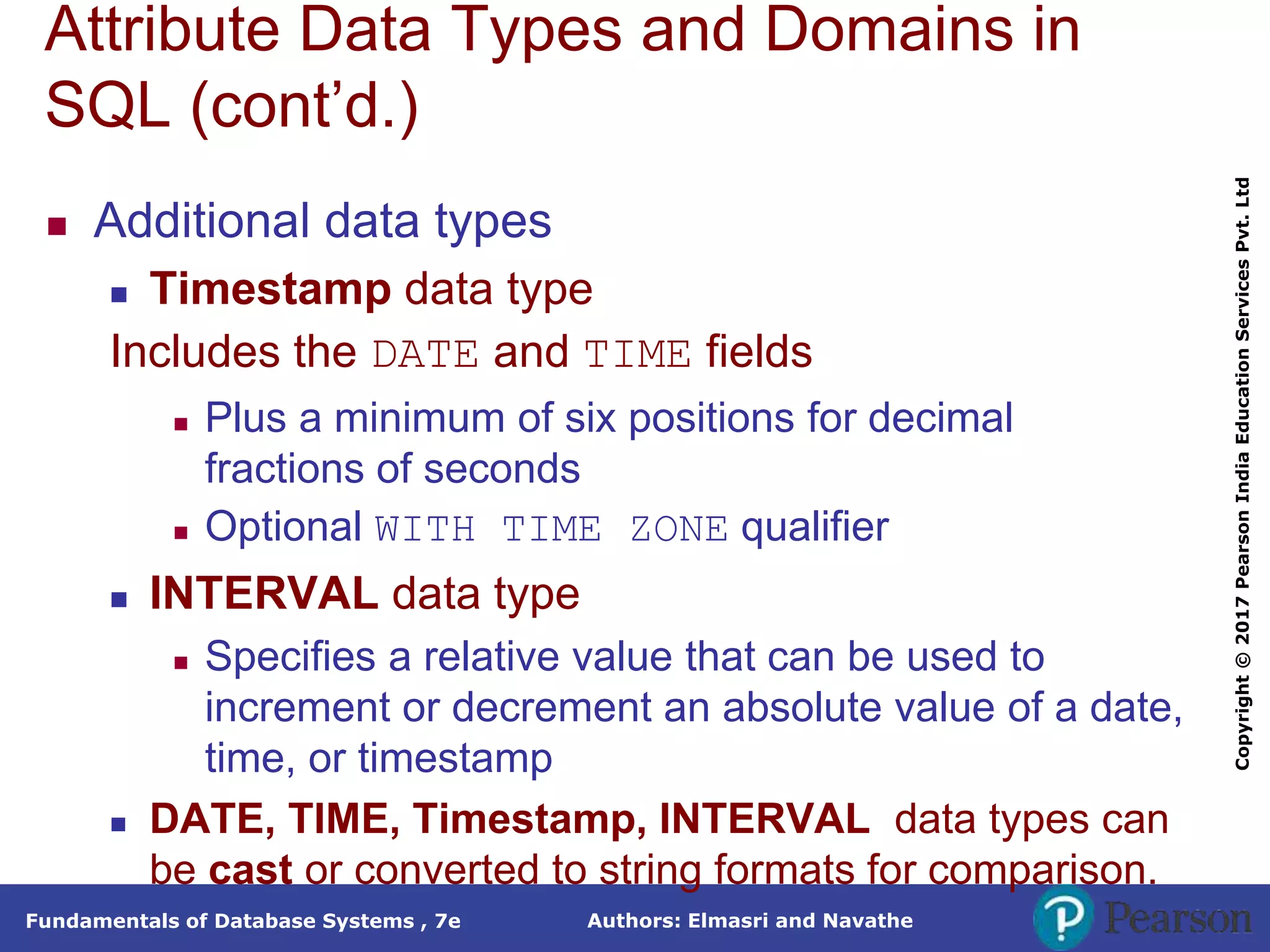
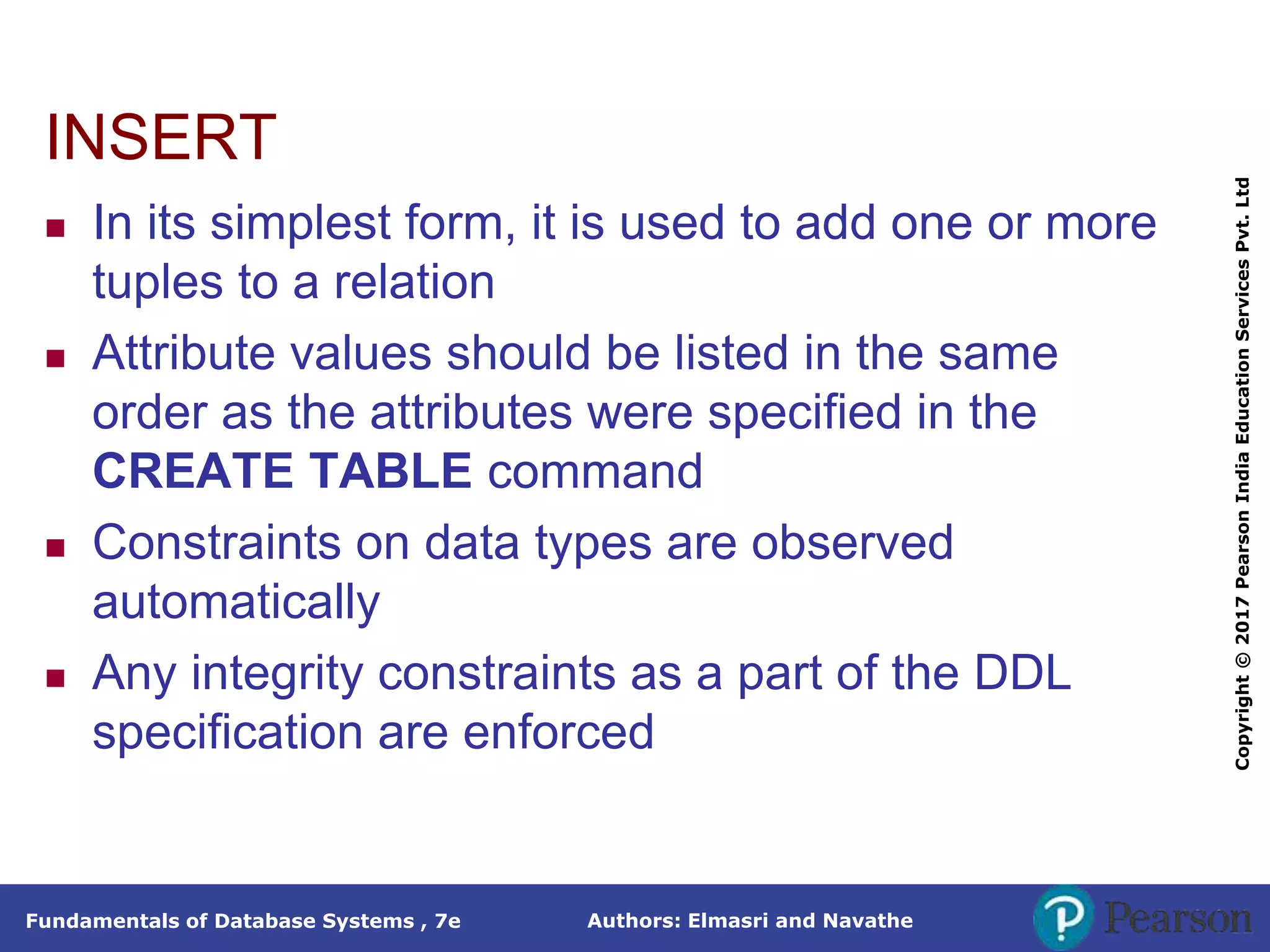
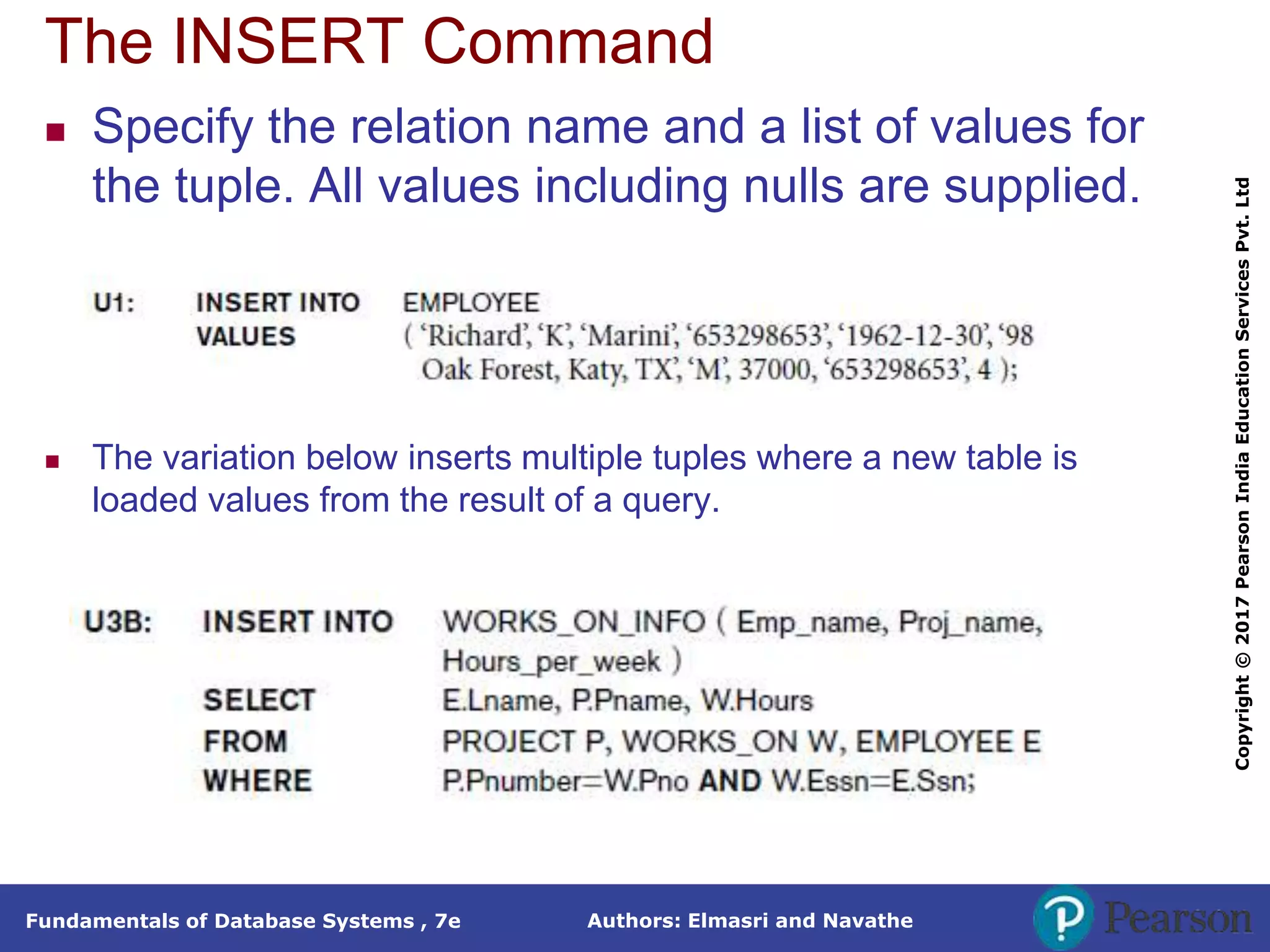
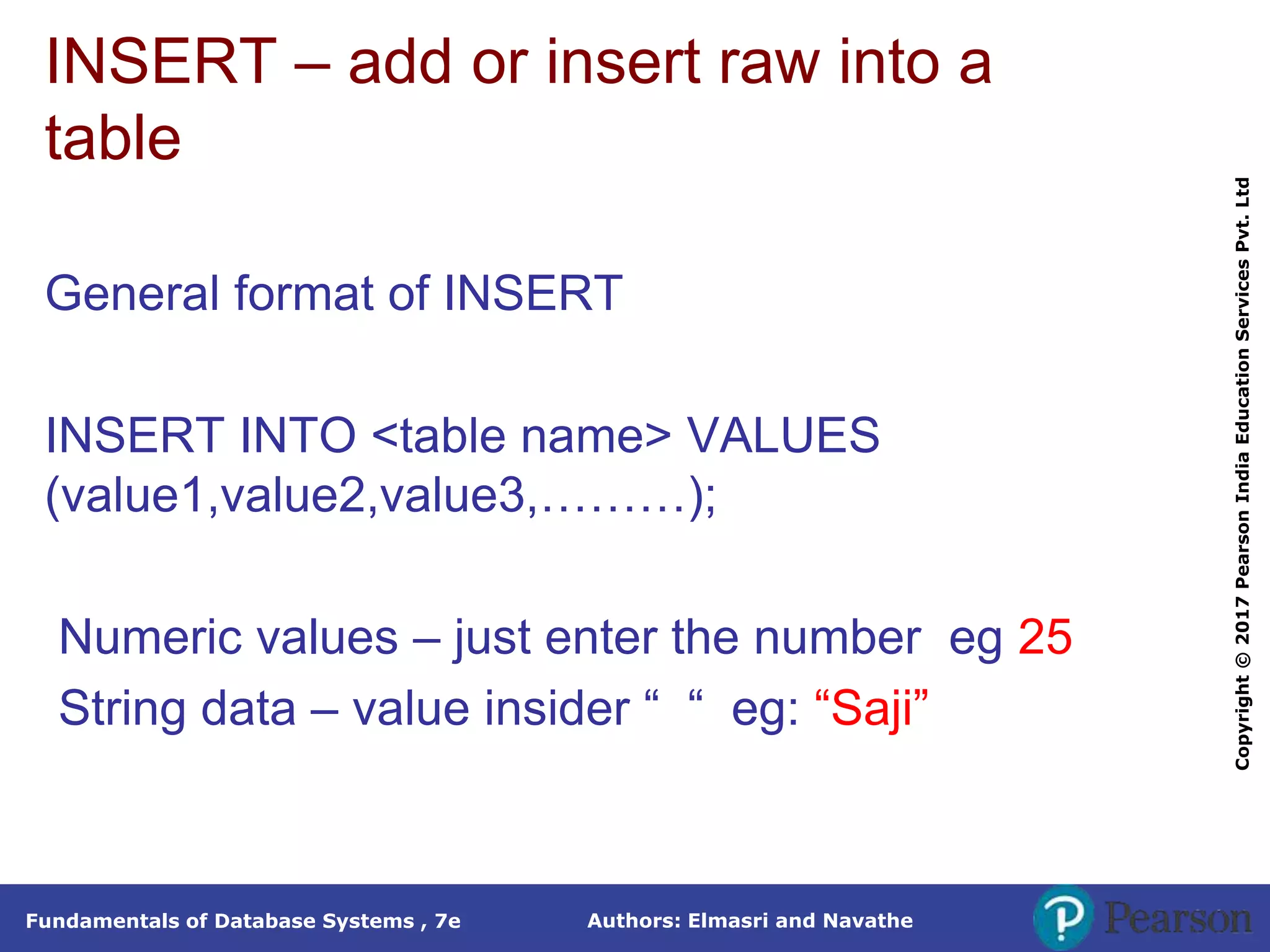
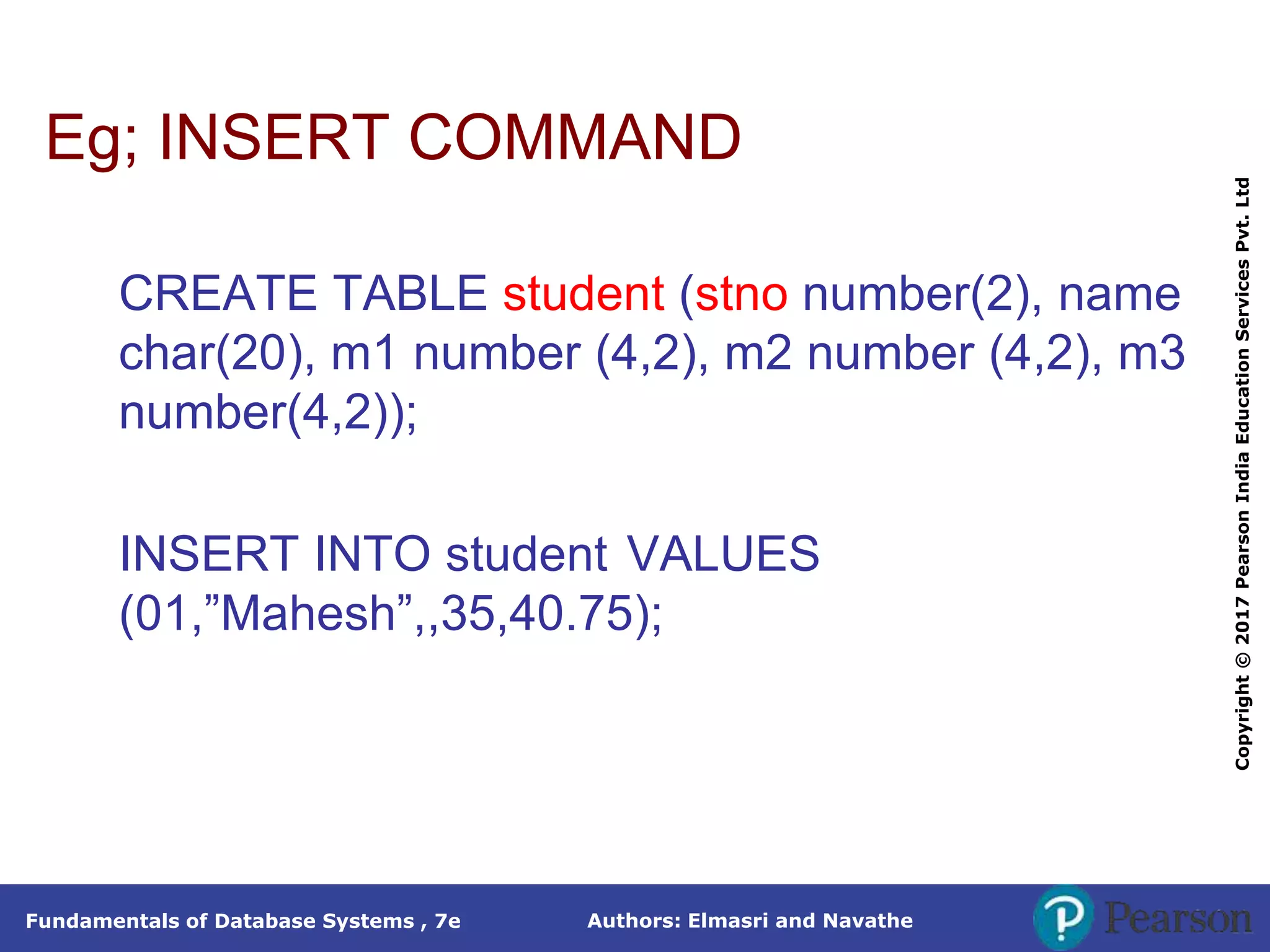
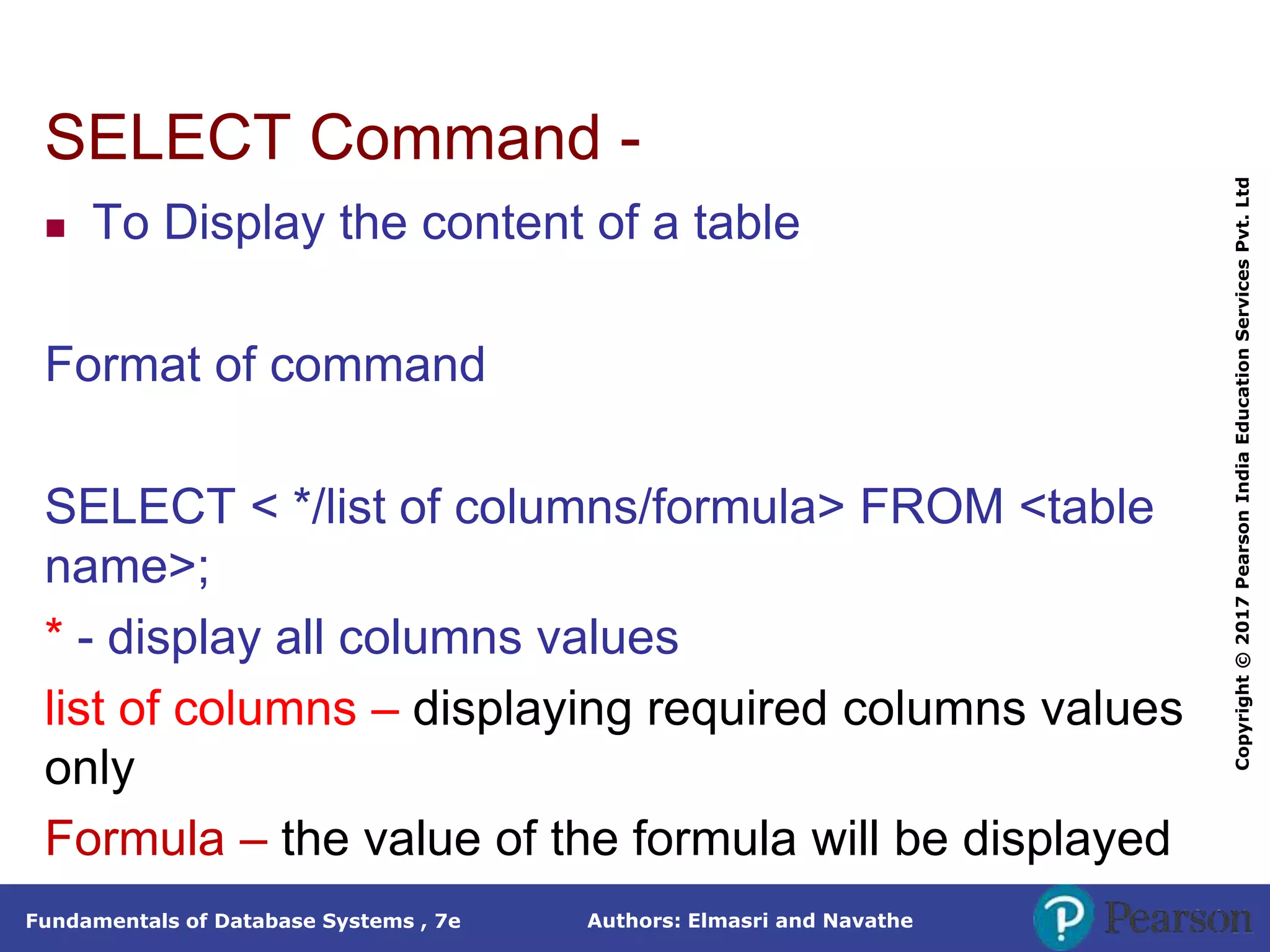
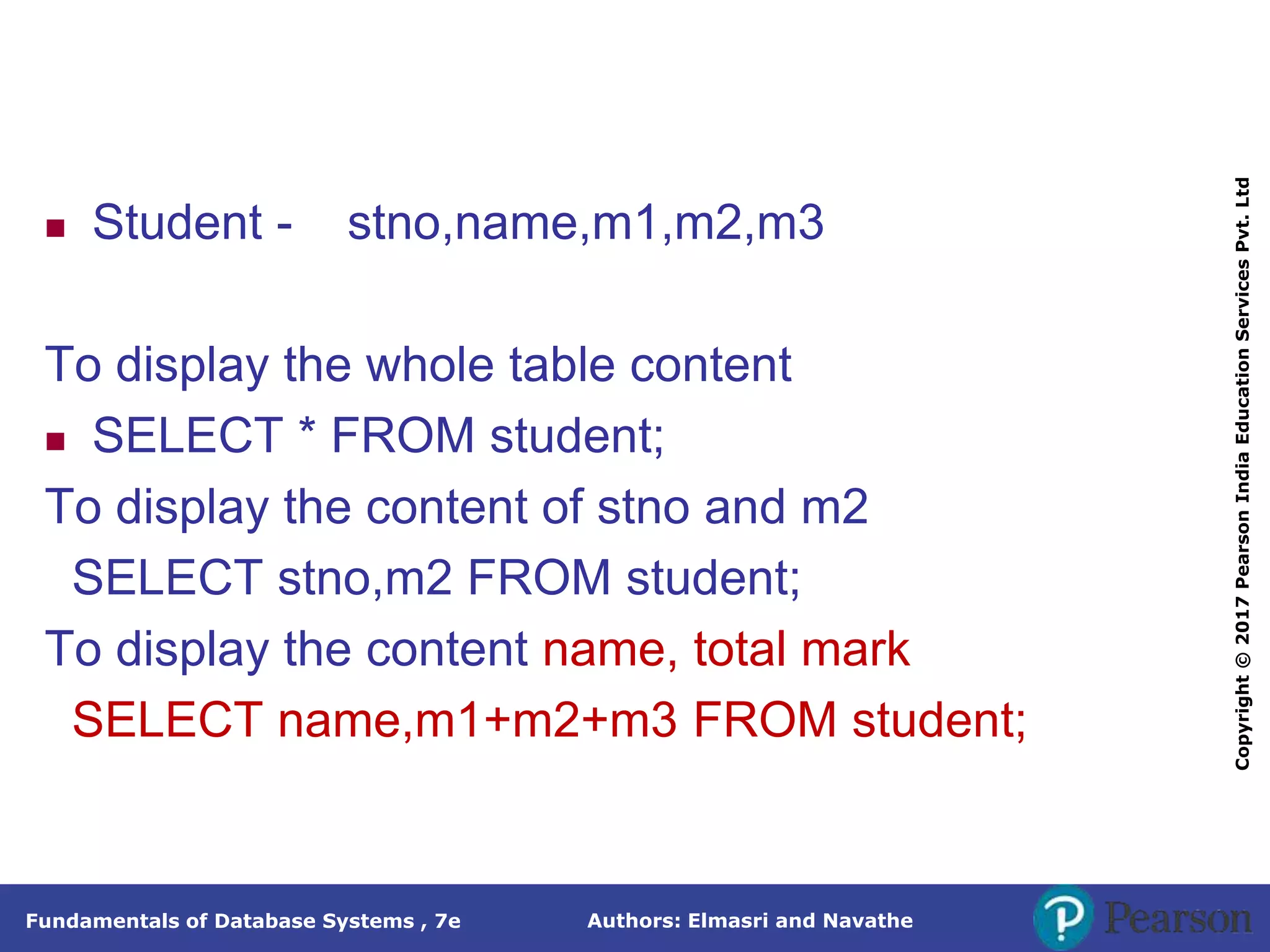
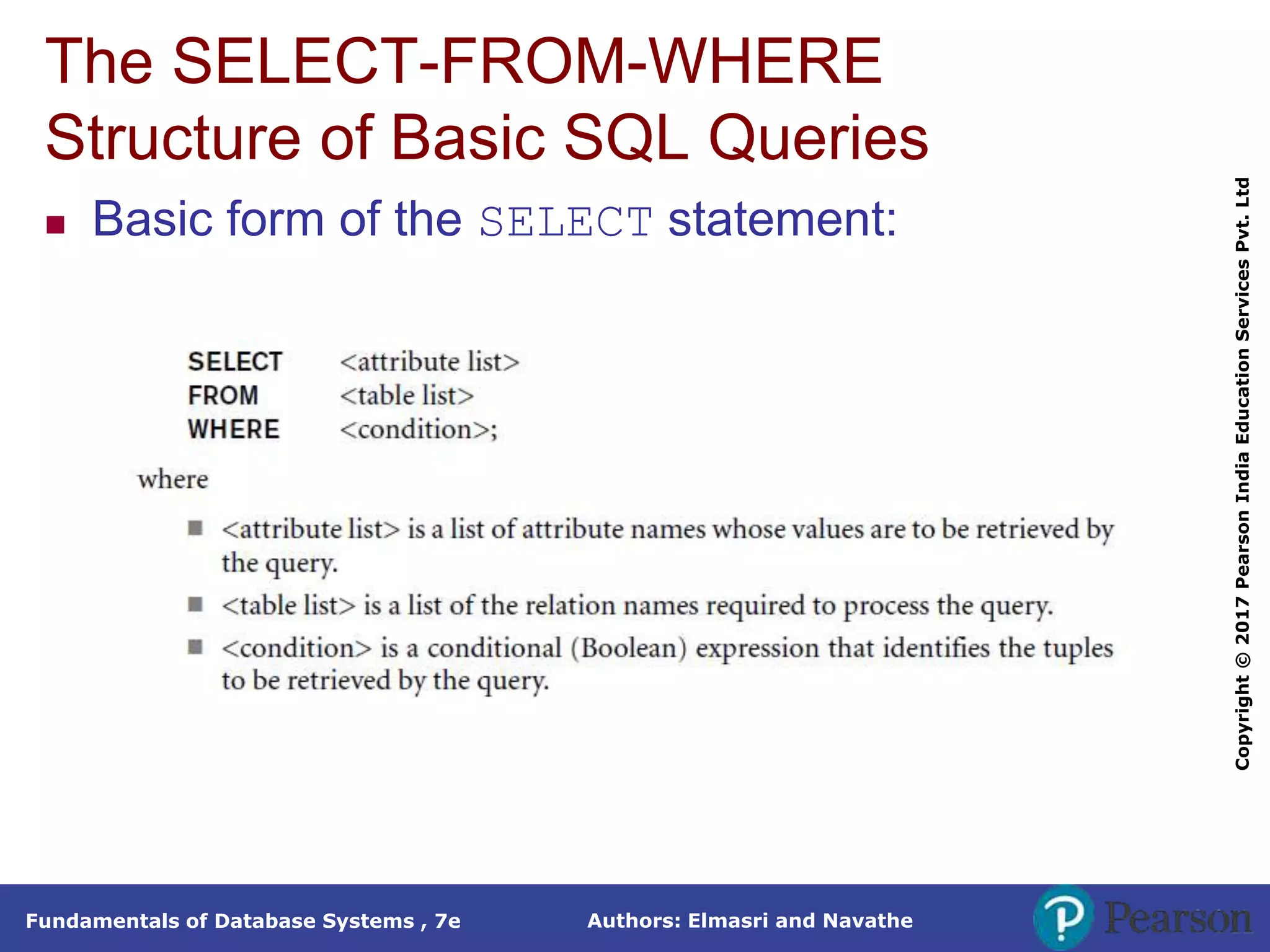
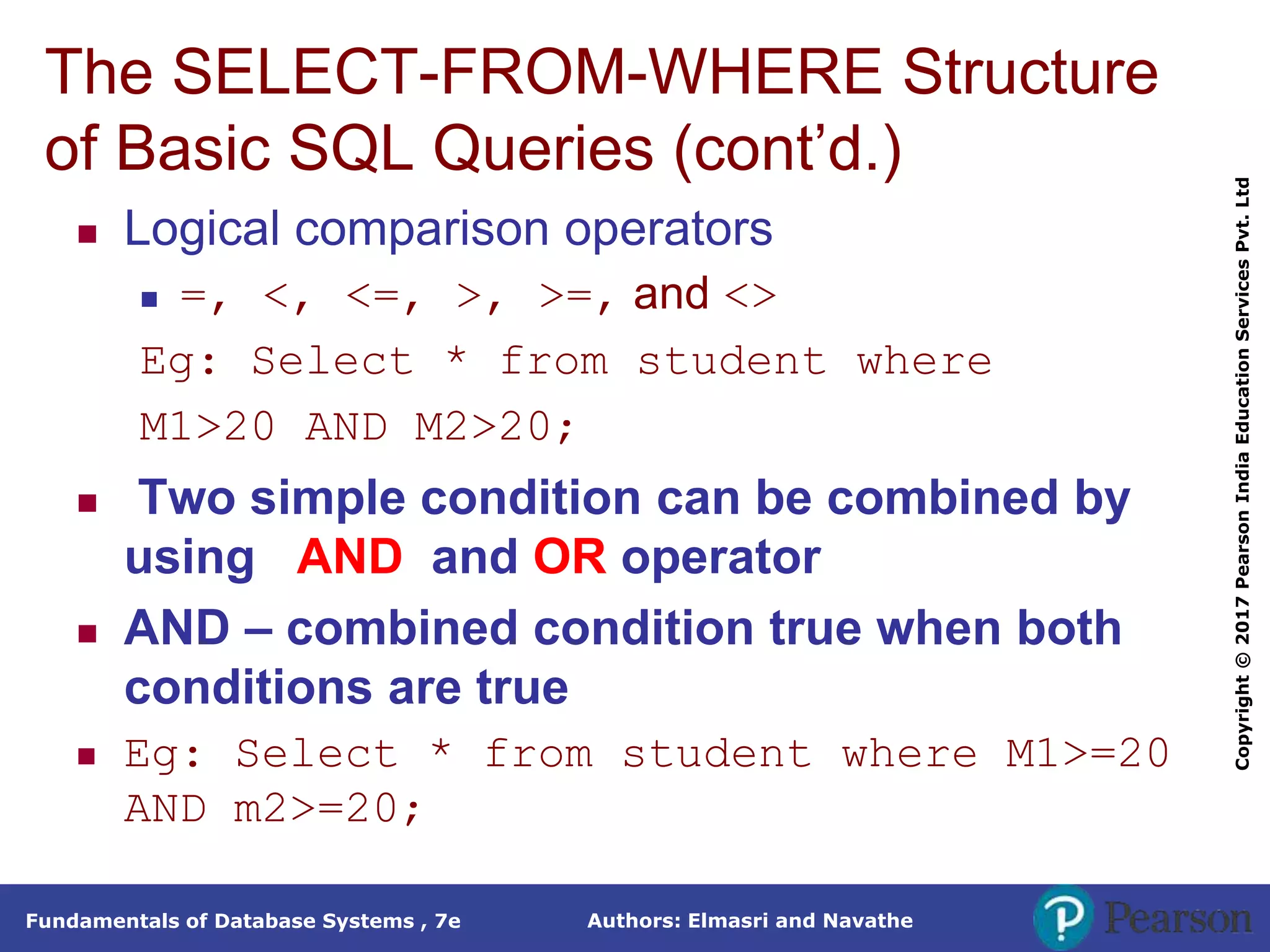

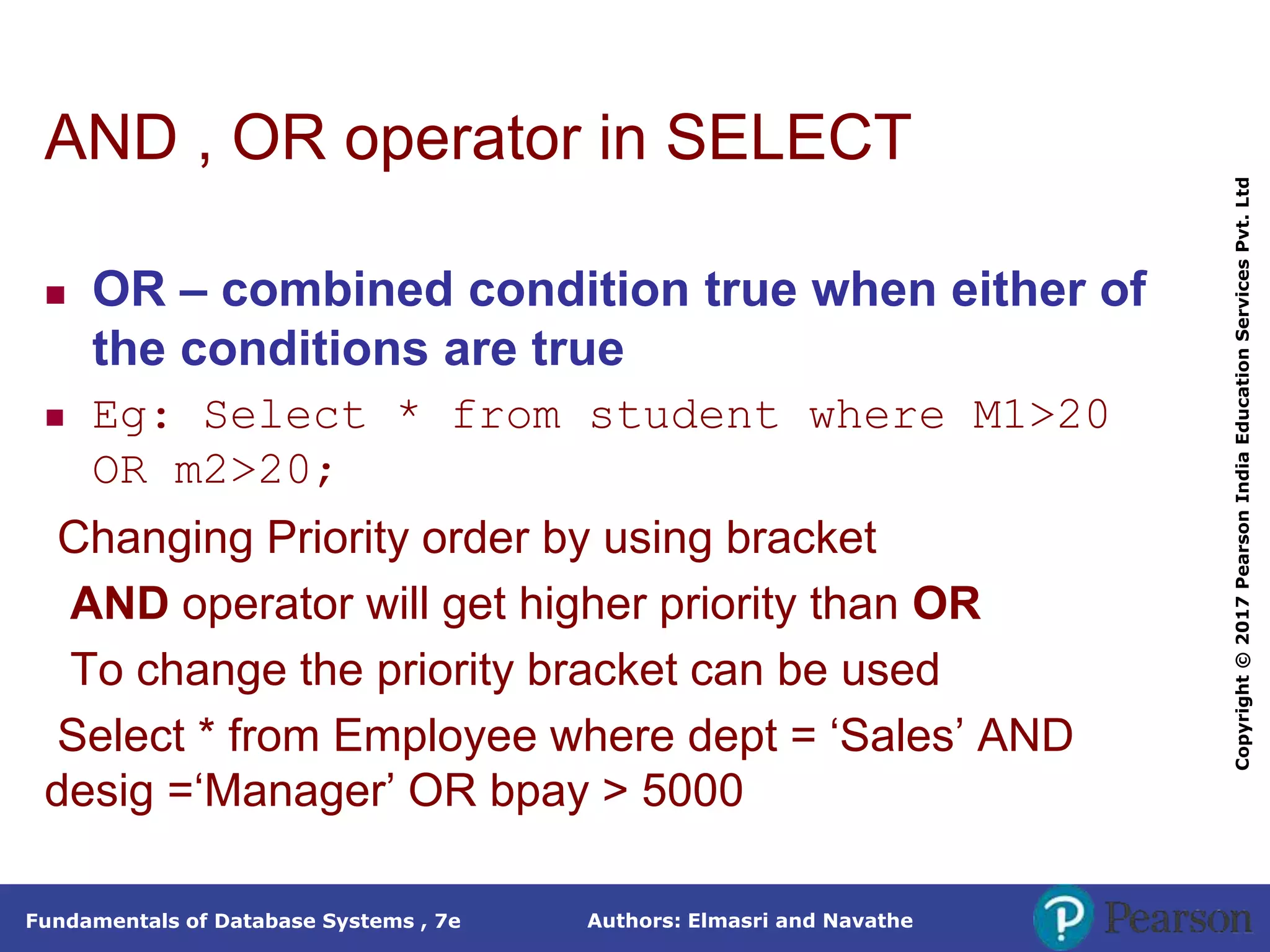
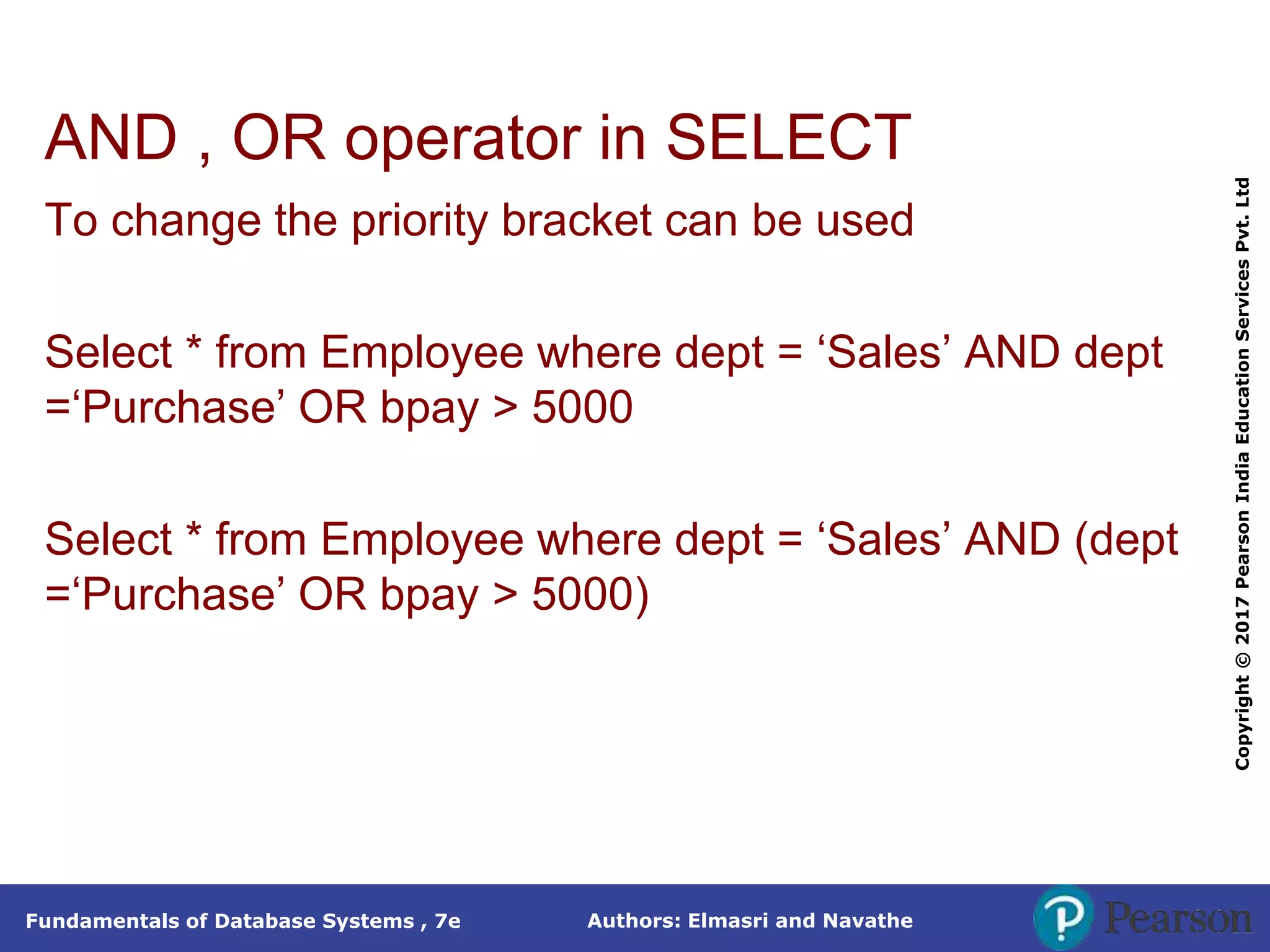
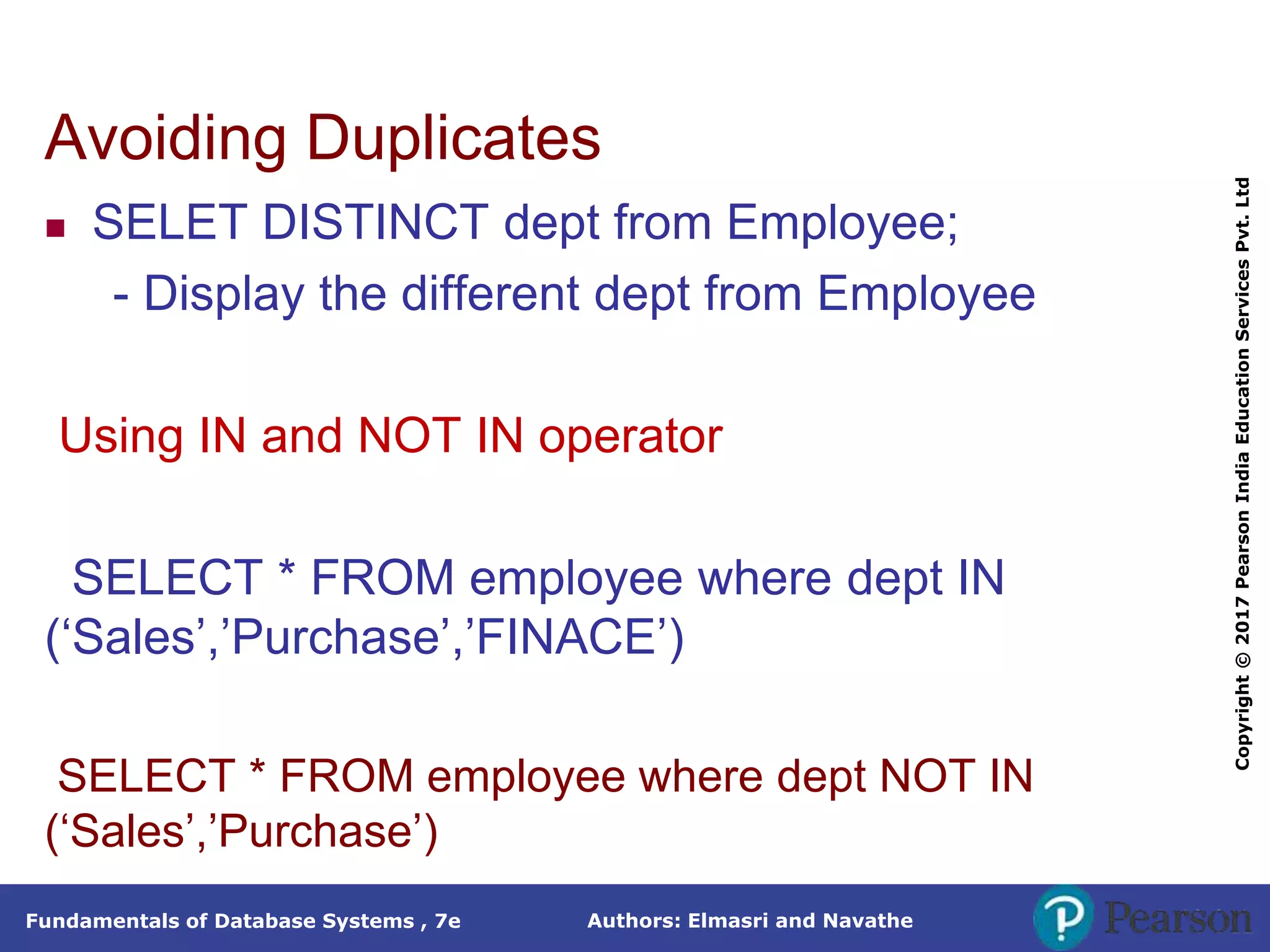
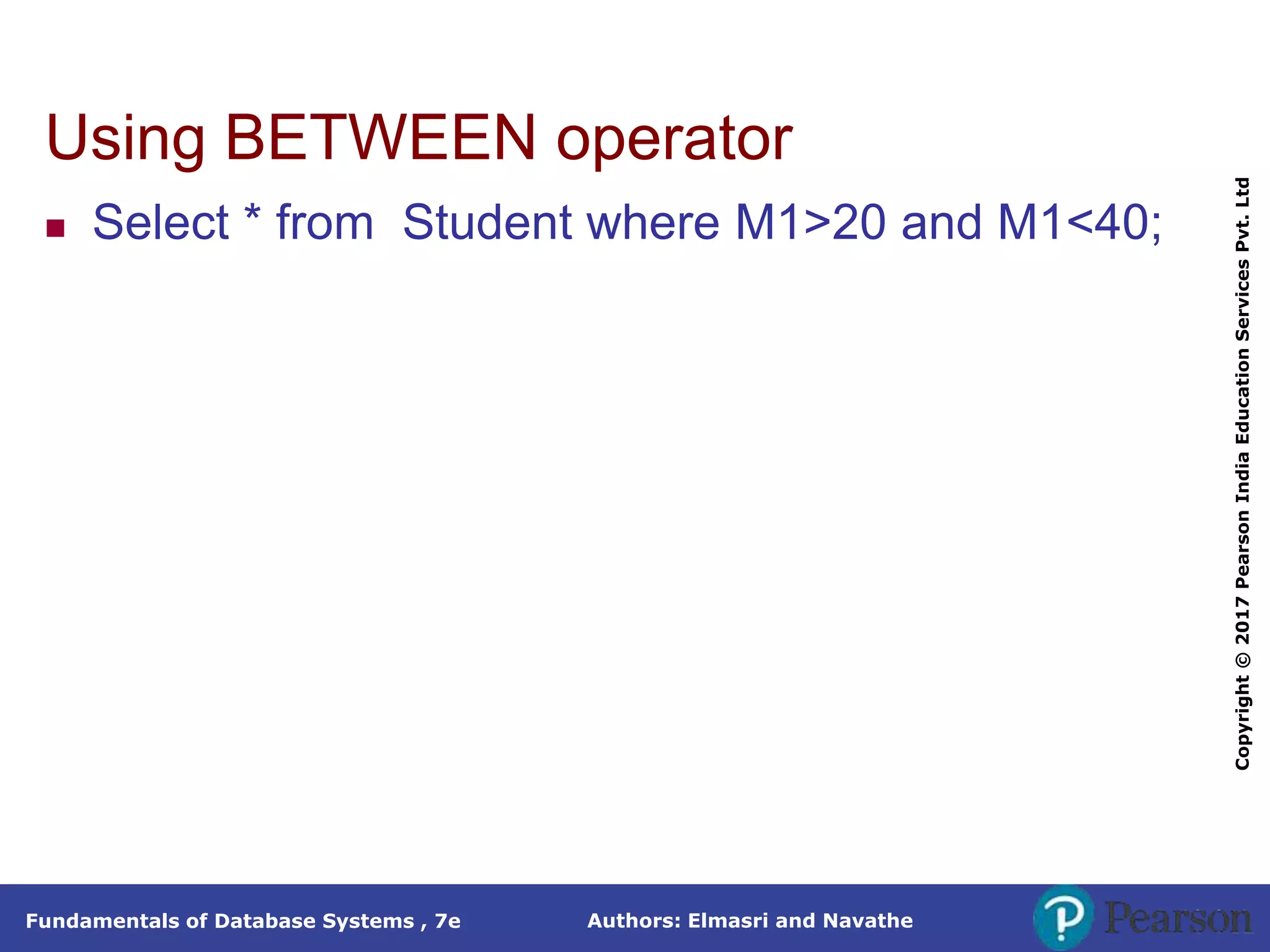
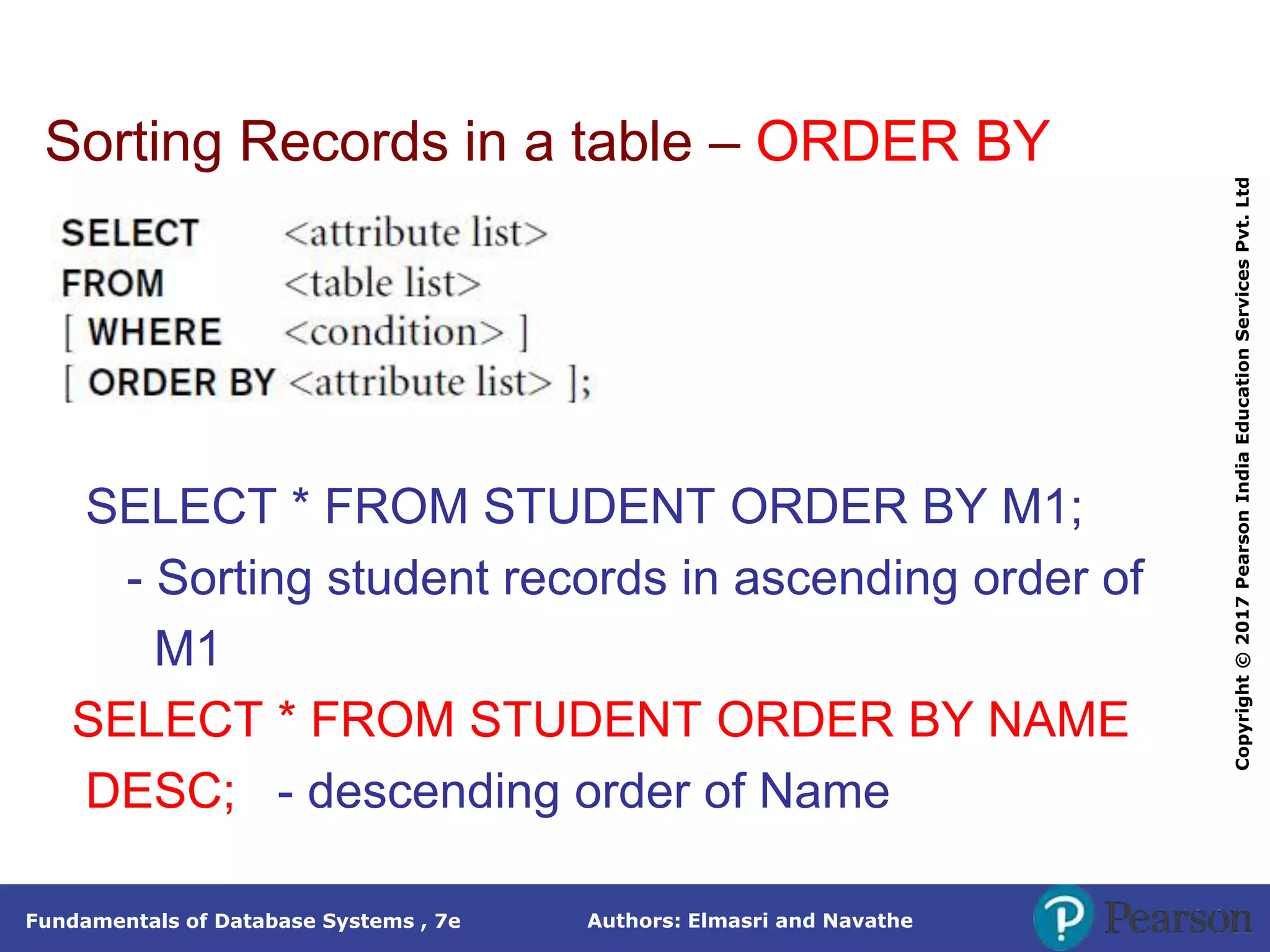
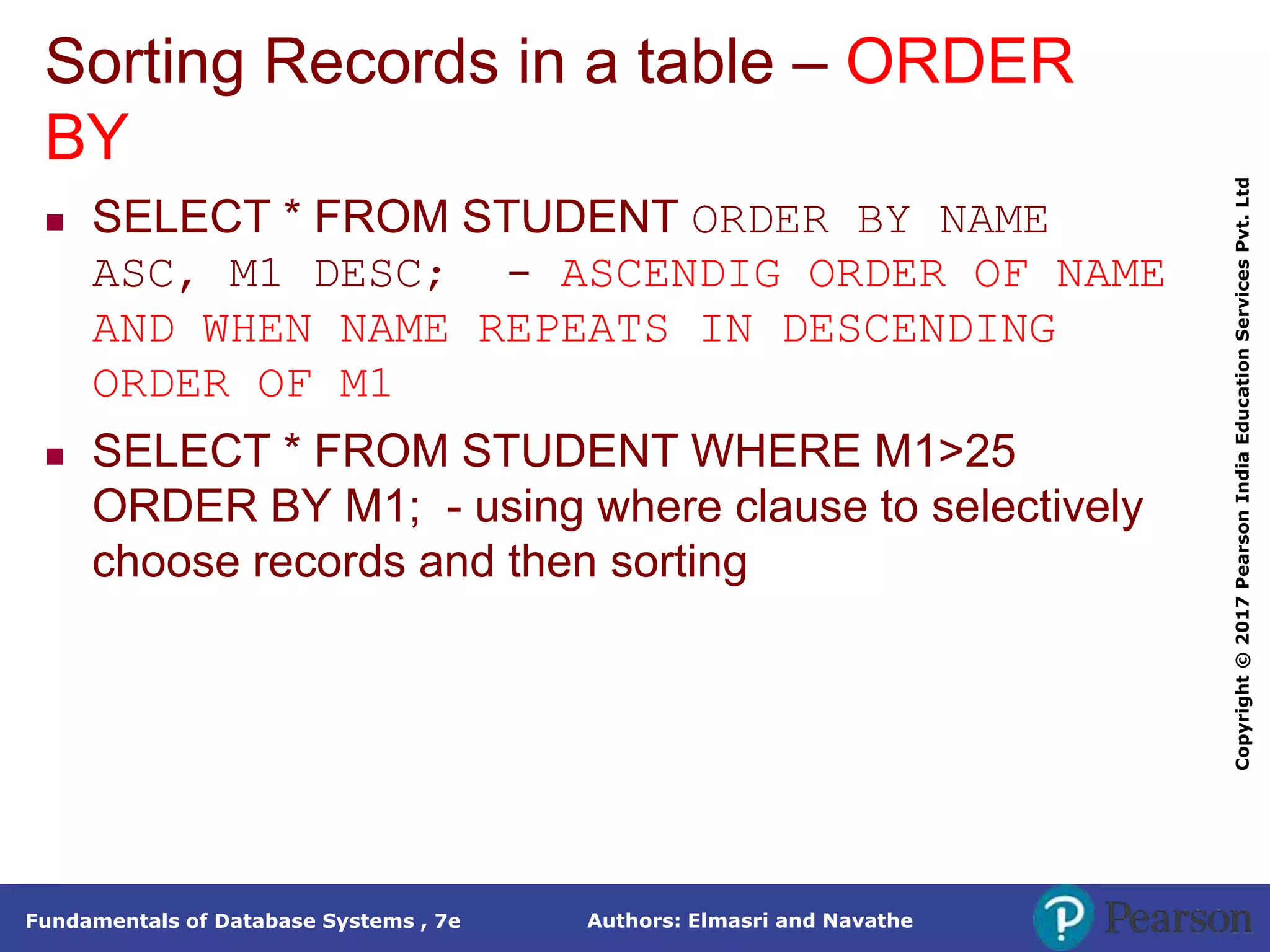
![Authors: Elmasri and Navathe
Fundamentals of Database Systems , 7e
Copyright
©
2017
Pearson
India
Education
Services
Pvt.
Ltd
UPDATE
UPDATE <Table Name> SET
<attribute>=‘value/Expression’ [WHERE clause];
Used to modify attribute values of one or more
selected tuples
A WHERE-clause selects the tuples to be
modified
An additional SET-clause specifies the attributes
to be modified and their new values
Each command modifies tuples in the same
relation](https://image.slidesharecdn.com/unit-3-sql-part1-230404034326-2851da22/75/Unit-3-SQL-part1-ppt-24-2048.jpg)
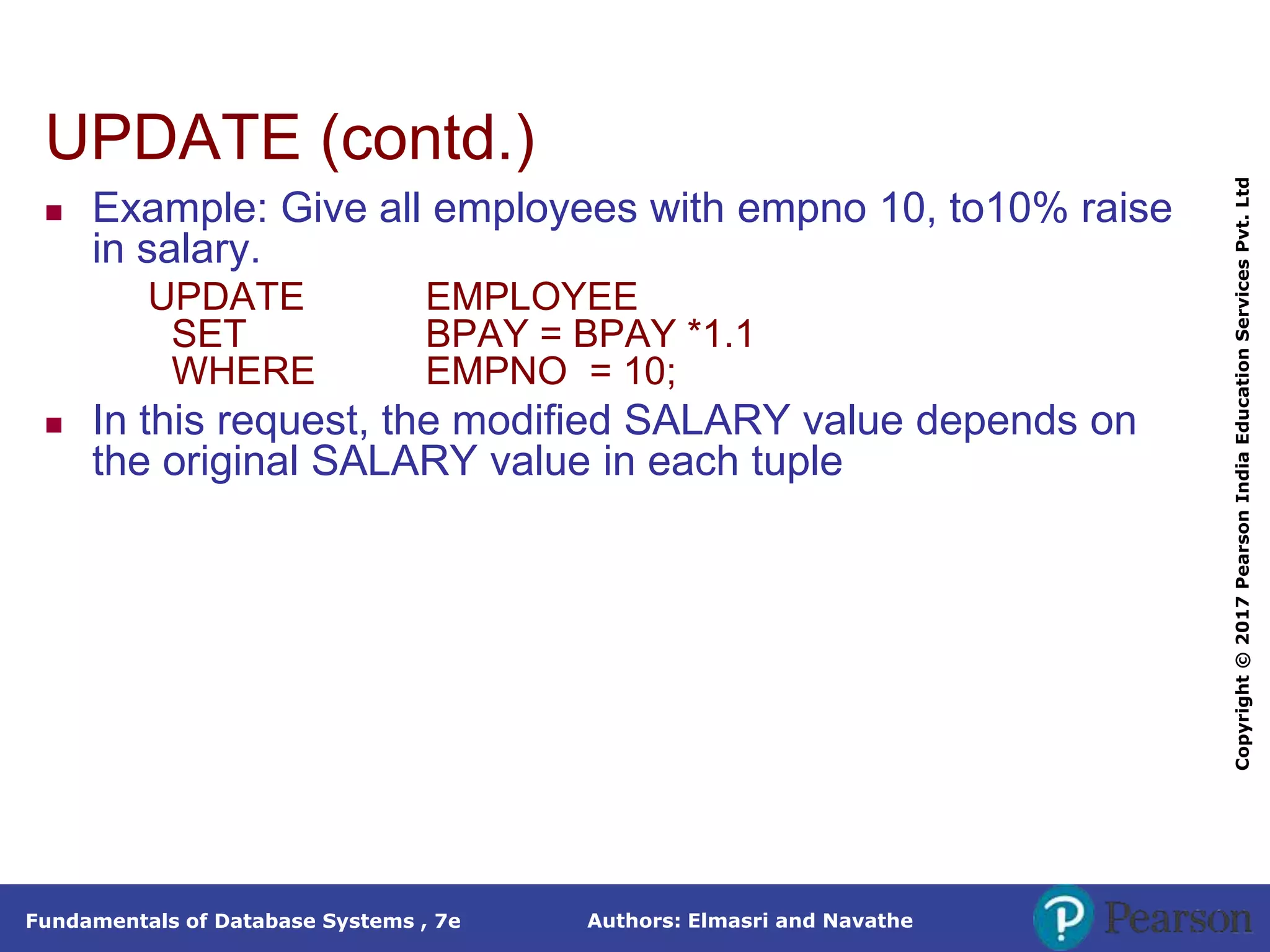
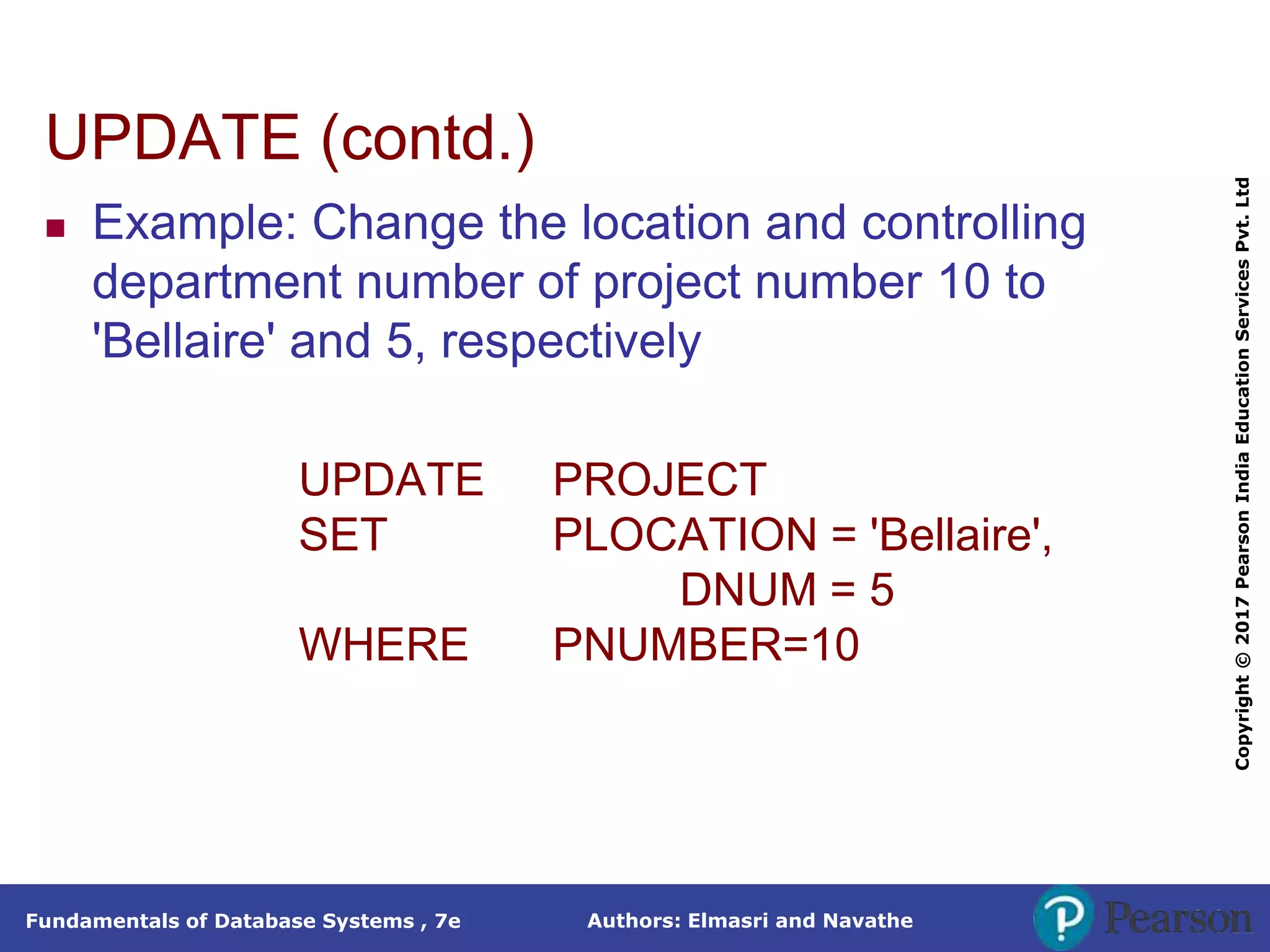
![Authors: Elmasri and Navathe
Fundamentals of Database Systems , 7e
Copyright
©
2017
Pearson
India
Education
Services
Pvt.
Ltd
DELETE
Removes tuples from a relation
DELETE <Table Name> [WHERE clause];
Includes a WHERE-clause to select the tuples to be
deleted
Tuples are deleted from only one table at a time
A missing WHERE-clause specifies that all tuples in
the relation are to be deleted; the table then becomes
an empty table
The number of tuples deleted depends on the number
of tuples in the relation that satisfy the WHERE-clause](https://image.slidesharecdn.com/unit-3-sql-part1-230404034326-2851da22/75/Unit-3-SQL-part1-ppt-27-2048.jpg)
